Zinnias are a gardener's delight, offering an explosion of color with minimal effort. These cheerful, sun-loving annuals bloom profusely from summer until the first frost, providing a reliable source of vibrant hues for any outdoor space. Their versatility allows them to fit into various garden styles, from formal beds to rustic wildflower meadows. Whether you are a novice gardener looking for an easy-to-grow flower or an experienced horticulturist seeking continuous blooms, zinnias provide endless possibilities. Exploring different zinnia garden ideas can transform your yard into a breathtaking landscape filled with life and color.
1. Rainbow Zinnia Border
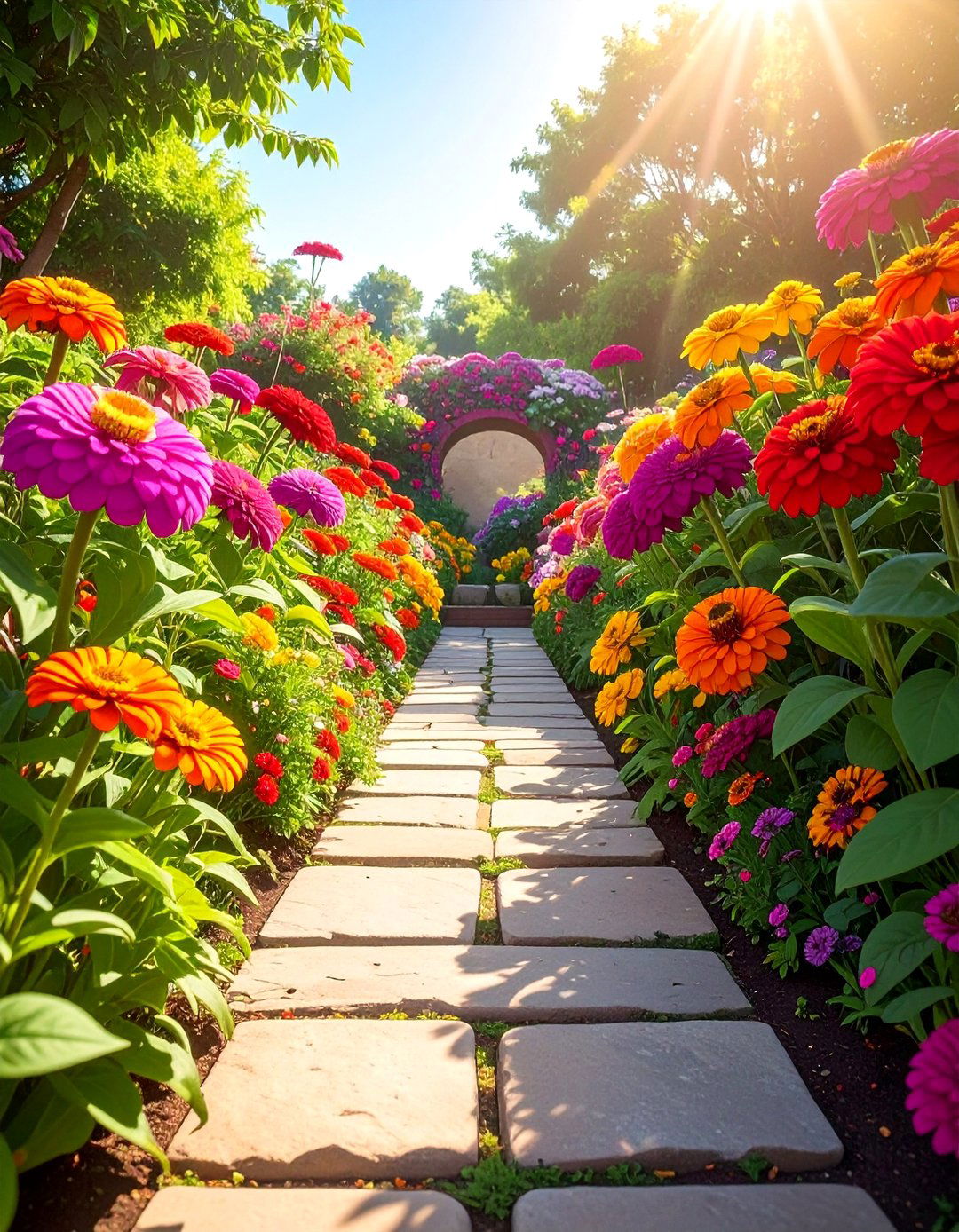
A rainbow zinnia border creates a stunning visual impact along pathways, driveways, or fences. To achieve this look, plant a mix of zinnia varieties in a wide spectrum of colors, including reds, oranges, yellows, pinks, purples, and whites. Consider using taller varieties like 'Benary's Giant' at the back and shorter, mounding types such as the 'Profusion' series in the front to create layers of color. This dense planting method not only produces a lush, full appearance but also helps to suppress weeds. The continuous blooming of a rainbow zinnia border ensures your garden edges remain vibrant and welcoming throughout the entire growing season.
2. Monochromatic Zinnia Bed
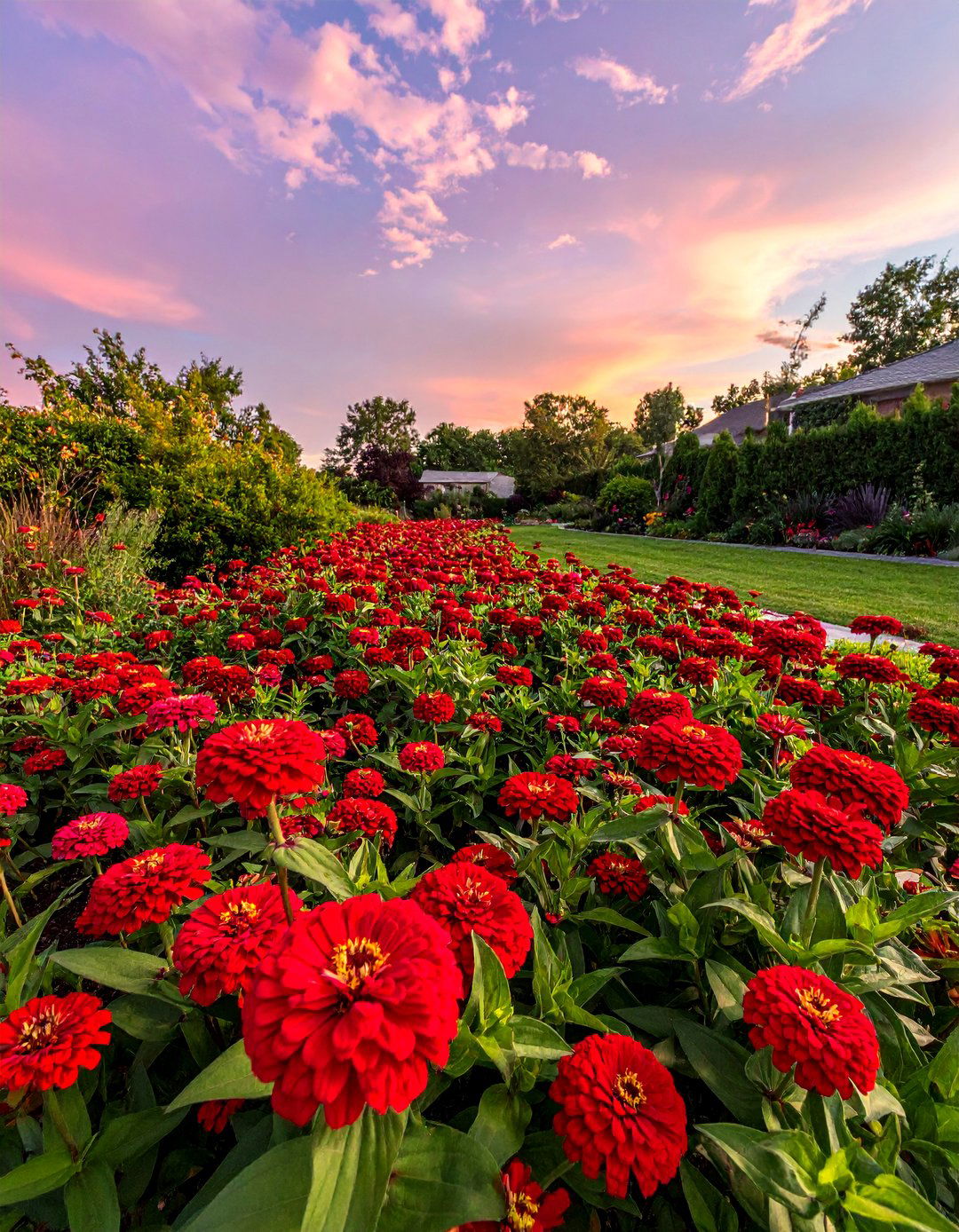
For a sophisticated and modern aesthetic, a monochromatic zinnia bed offers a powerful design statement. This approach involves selecting zinnia varieties in a single color family, such as brilliant scarlets, deep purples, or crisp whites. Planting a mass of one color creates a unified and dramatic effect that draws the eye and highlights the texture of the blooms. Varieties like 'Zowie! Yellow Flame' or the pure white 'Polar Bear' are perfect for this purpose. The simplicity of a single color scheme allows the unique shapes and forms of the zinnia flowers to stand out, resulting in a clean, elegant, and impactful garden feature.
3. Zinnia Cutting Garden
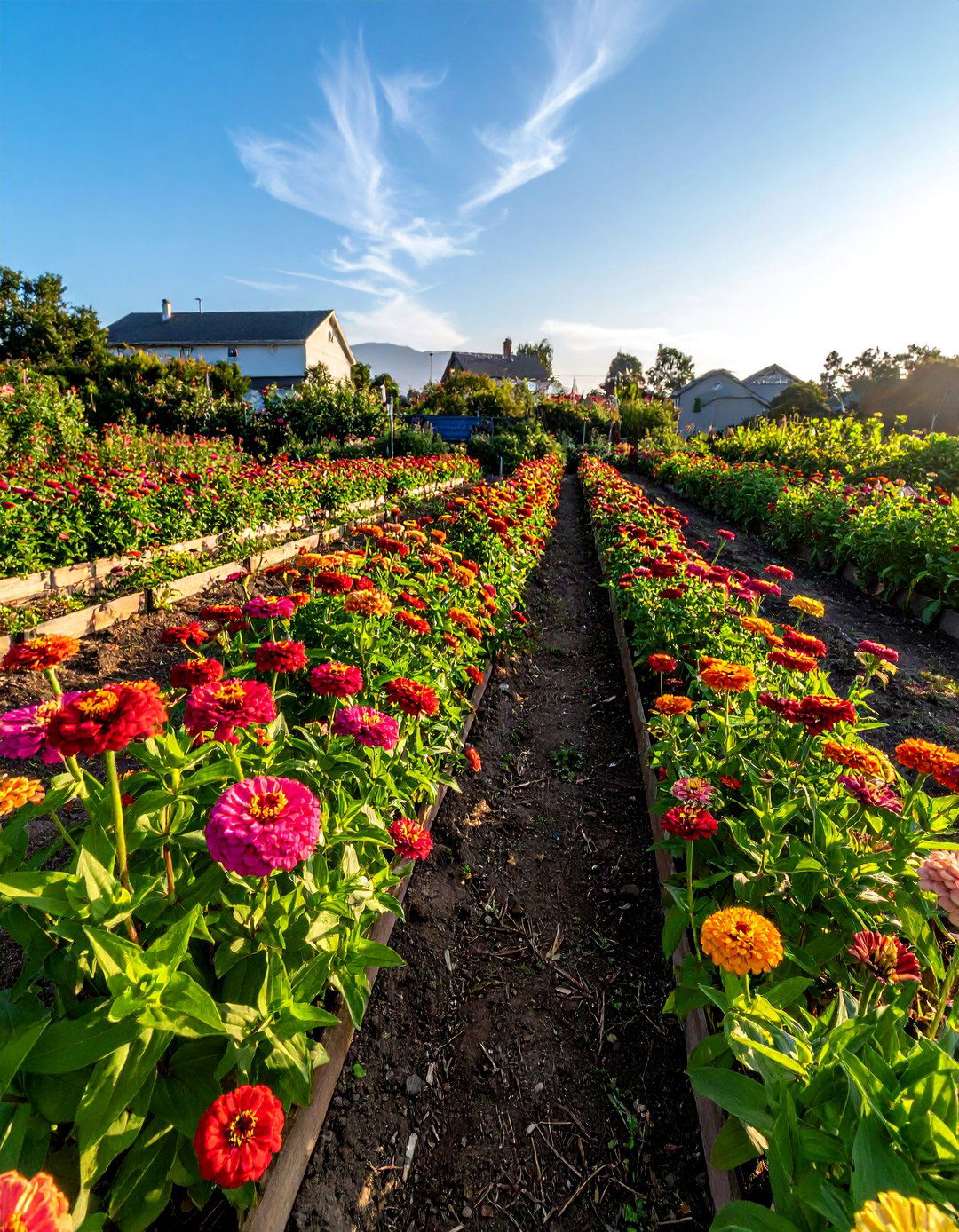
A dedicated zinnia cutting garden ensures a continuous supply of fresh, beautiful bouquets for your home. To create one, choose long-stemmed varieties like the 'California Giant' or 'State Fair' series, which are specifically bred for cutting. Plant them in neat rows in a sunny, well-drained location, making harvesting easy. Regular cutting actually encourages the plants to produce more blooms, so you can enjoy an abundant harvest all summer long. Interspersing different colors and flower forms, from single-petaled to dahlia-flowered types, will provide diverse textures and hues for your indoor floral arrangements, bringing the garden's beauty inside.
4. Zinnia Pollinator Garden
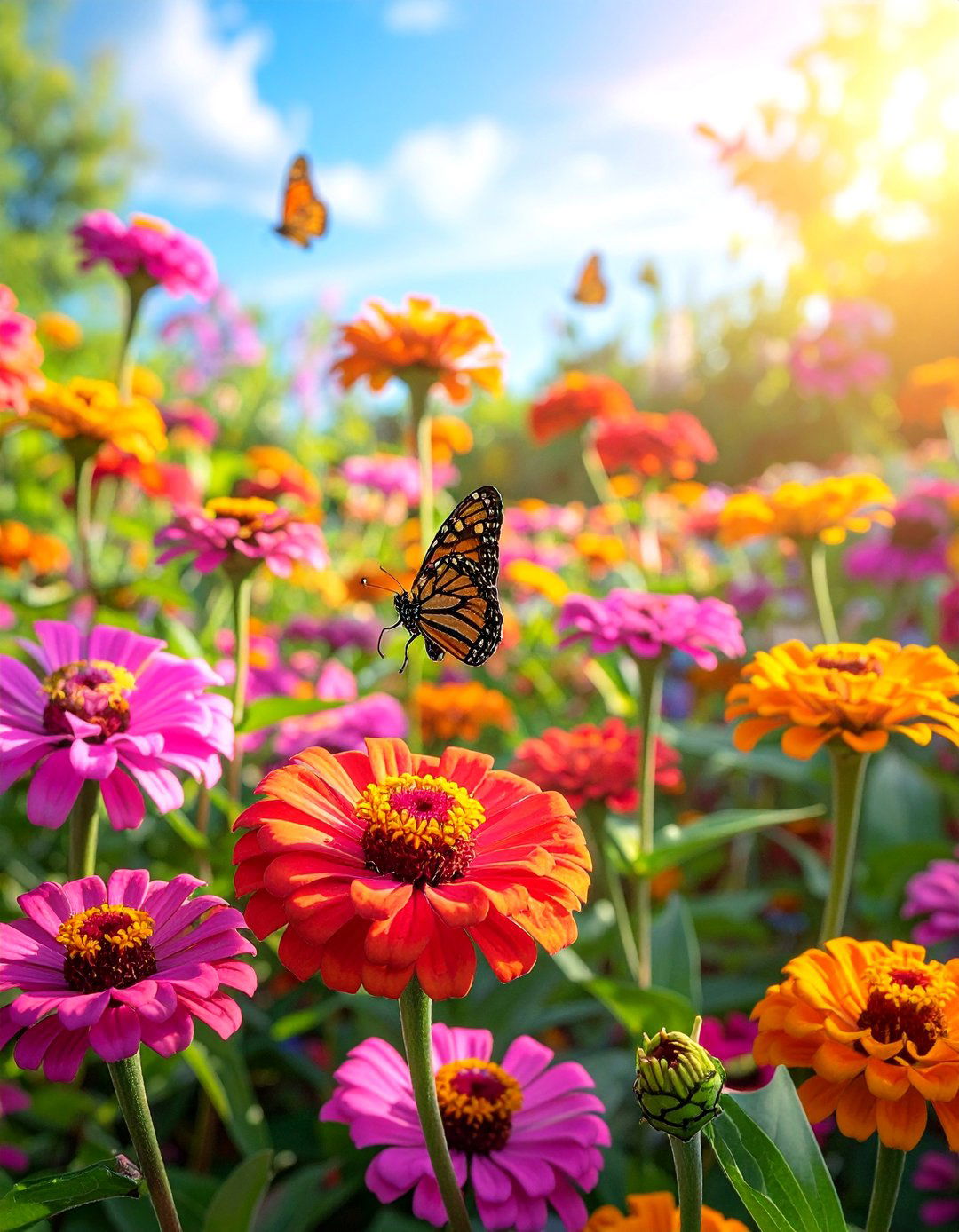
Designing a zinnia pollinator garden is a wonderful way to support local ecosystems while enjoying a beautiful display. Zinnias are a favorite of butterflies, bees, and hummingbirds, who are attracted to their bright colors and accessible nectar. To maximize appeal, plant large drifts of single-petaled varieties, as their open centers make it easier for pollinators to access the pollen and nectar. Combine zinnias with other pollinator-friendly plants like coneflowers, salvia, and milkweed to create a diverse habitat. This not only results in a lively, active garden but also contributes to the health of your local environment by providing essential food sources.
5. Zinnia Container Garden
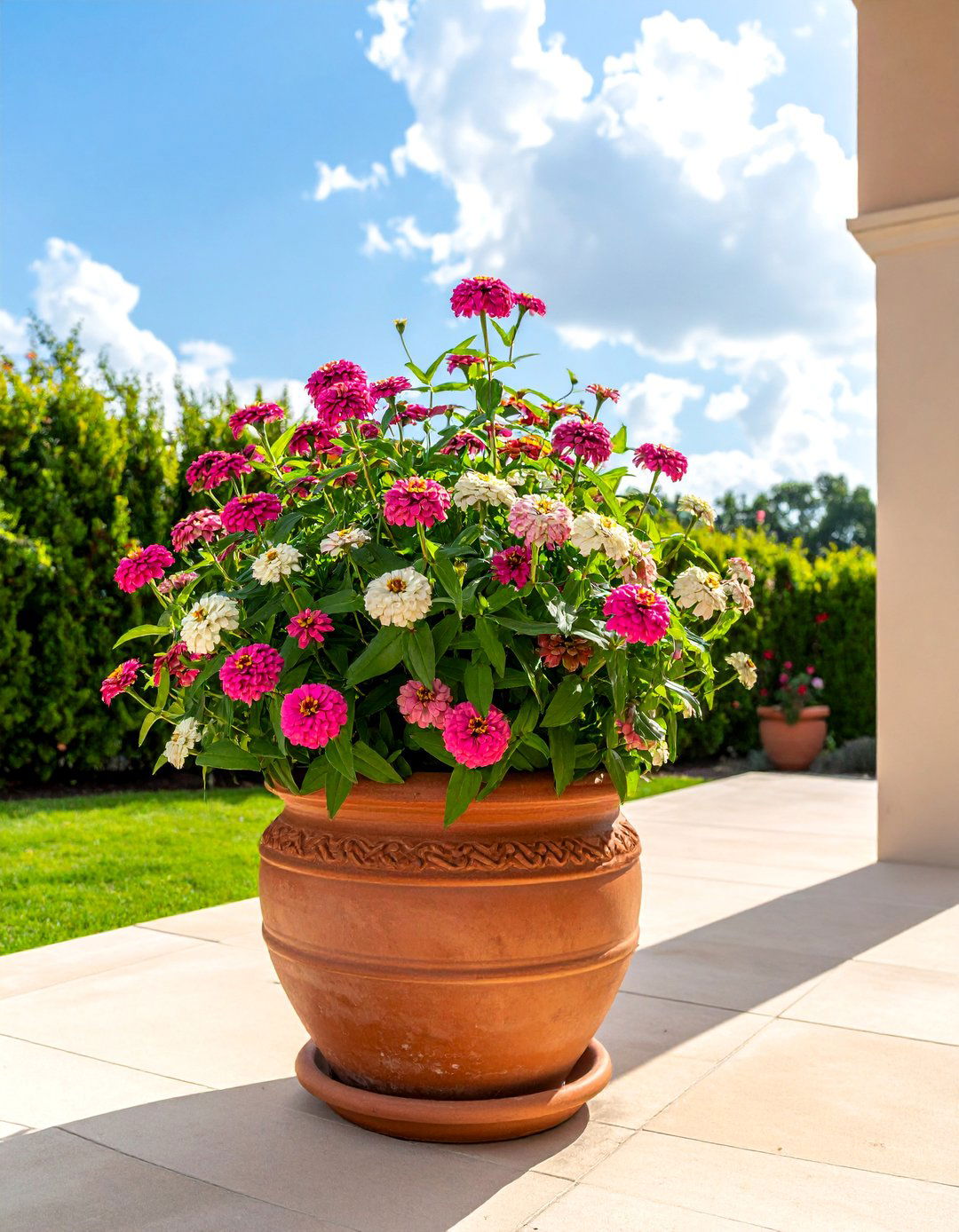
Zinnias are exceptionally well-suited for container gardening, making them perfect for patios, balconies, and small spaces. When selecting varieties, opt for dwarf or compact types such as the 'Thumbelina' or 'Zahara' series, which won't outgrow their pots. Use a high-quality potting mix and ensure your containers have excellent drainage. You can plant a single zinnia variety for a simple, bold statement or mix them with other sun-loving annuals like petunias or marigolds for a "thriller, filler, spiller" effect. A zinnia container garden brings a burst of cheerful color to any sunny spot, no matter how limited the space.
6. Zinnia and Dahlia Combination Garden
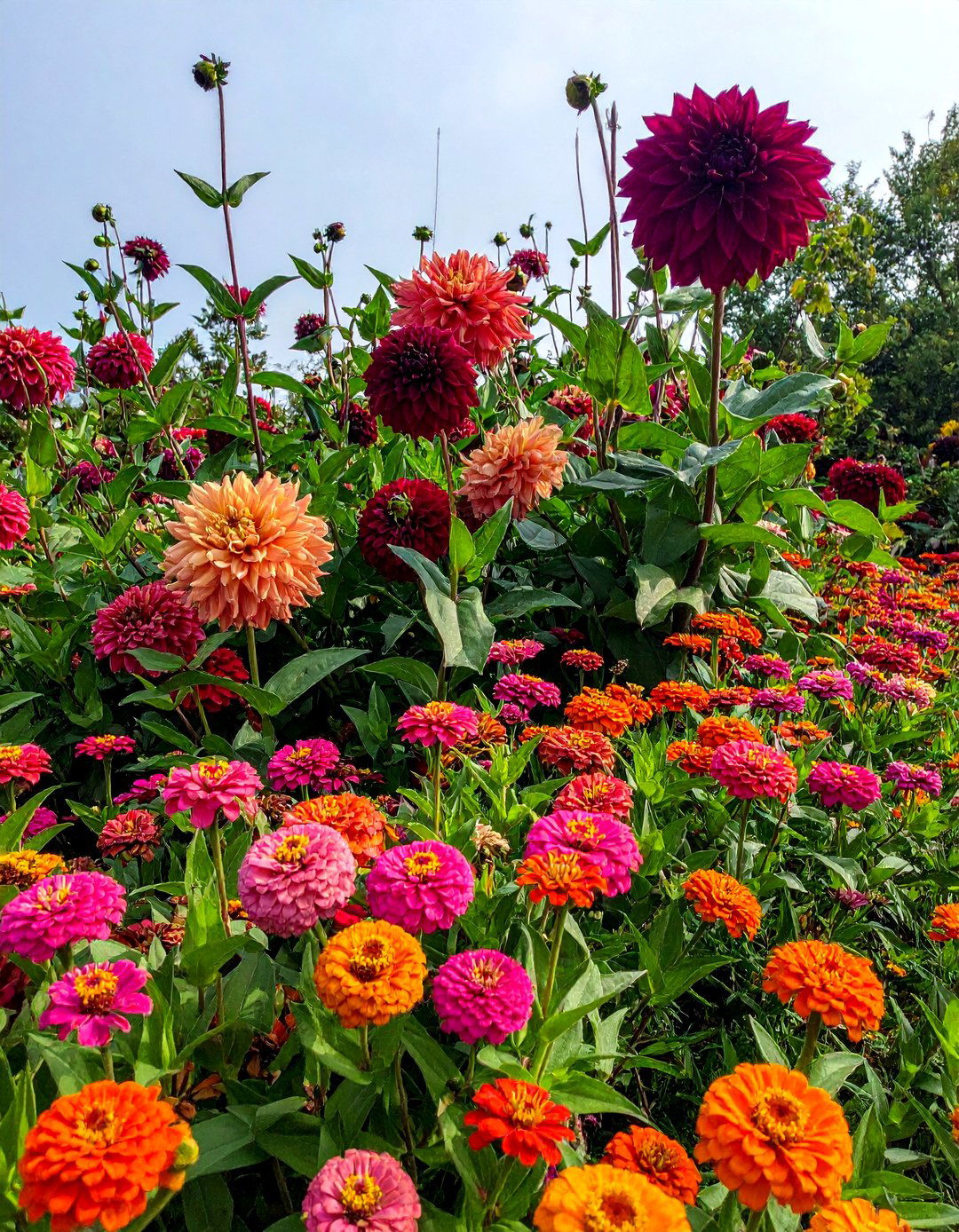
Pairing zinnias with dahlias creates a spectacular late-summer garden filled with bold forms and vibrant colors. Both flowers thrive in full sun and bloom prolifically from mid-summer until the first frost, offering a harmonious and long-lasting display. The simple, daisy-like shapes of many zinnia varieties provide a lovely contrast to the intricate, multi-petaled forms of dahlias. Plant taller dahlias towards the back of the border and fill in the front and middle with various zinnia heights and colors. This combination not only offers a rich tapestry of textures but also ensures your garden remains a focal point well into the autumn months.
7. Pastel Zinnia Garden
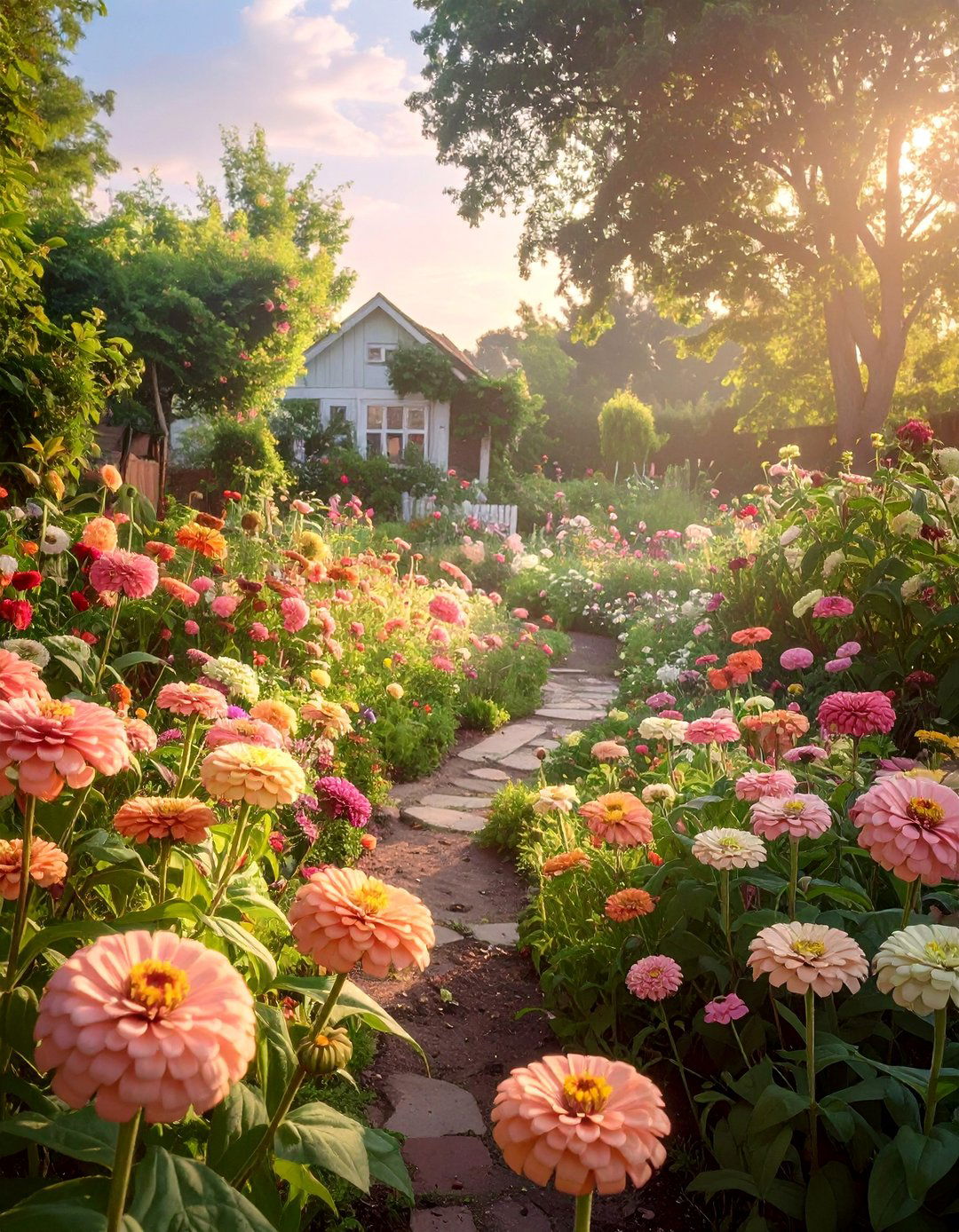
For a softer, more romantic garden aesthetic, a pastel zinnia garden is an excellent choice. Focus on varieties that produce blooms in delicate shades of pink, lavender, pale yellow, and creamy white. The 'Queen Lime Blush' and 'Zinderella Peach' varieties are particularly sought after for their unique, muted tones that blend beautifully together. A pastel palette creates a serene and dreamy atmosphere, perfect for a cottage-style garden or a tranquil seating area. These softer colors are especially luminous in the gentle light of early morning and late afternoon, adding an ethereal quality to your outdoor space and creating a peaceful retreat.
8. Hot-Colored Zinnia Flower Bed
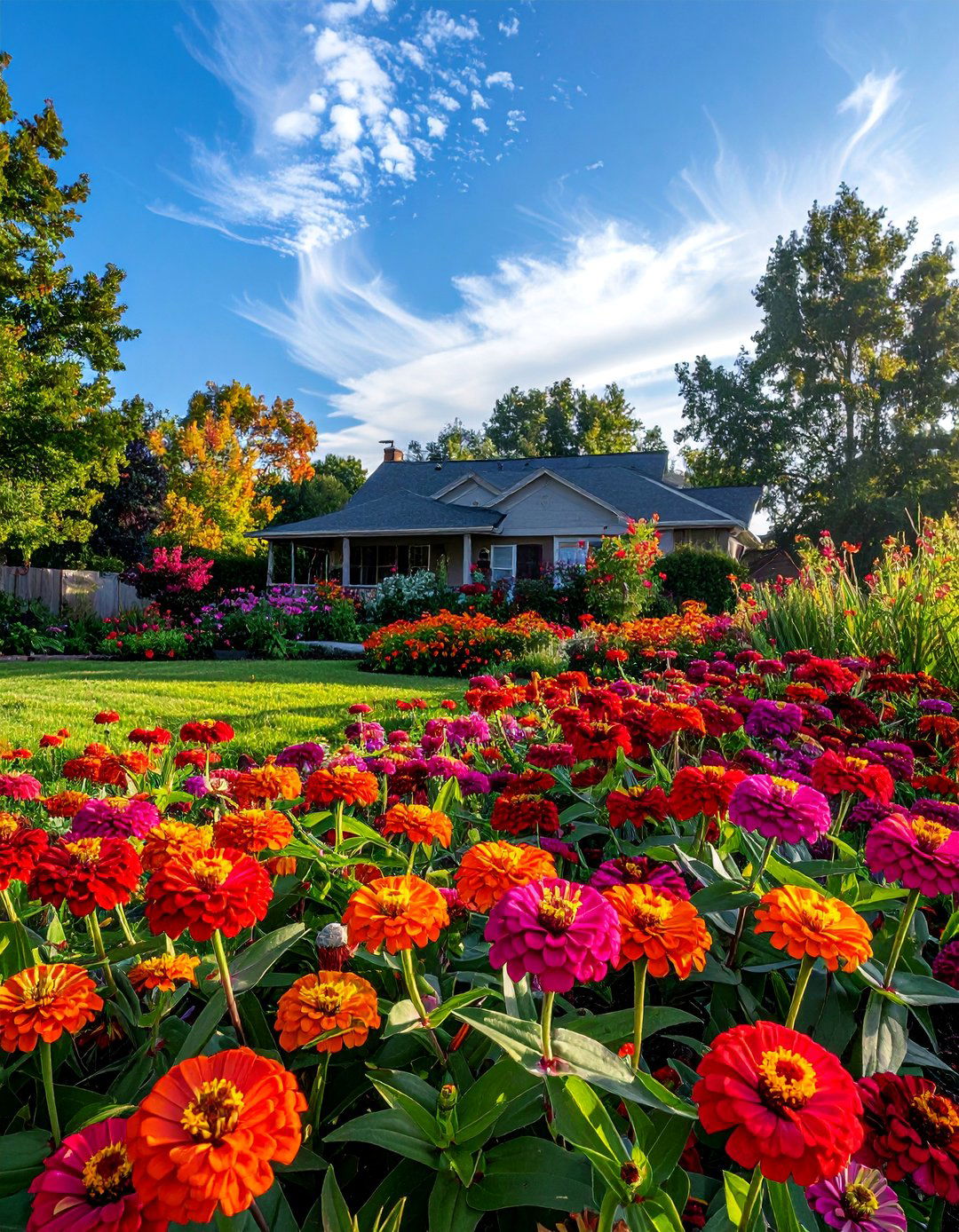
Create an electrifying display with a hot-colored zinnia flower bed that sizzles with energy. This design utilizes zinnias in fiery shades of red, orange, and magenta to make a bold and dramatic statement. Varieties like 'Benary's Giant Scarlet' or the vibrant 'Uproar Rose' are perfect for this high-impact look. Planting them in large, dense blocks of color intensifies the effect, creating a visual spectacle that can be seen from a distance. This energetic color scheme is ideal for areas of the garden that you want to stand out, such as a focal point in the backyard or a welcoming display in the front yard.
9. Zinnia Wildflower Meadow
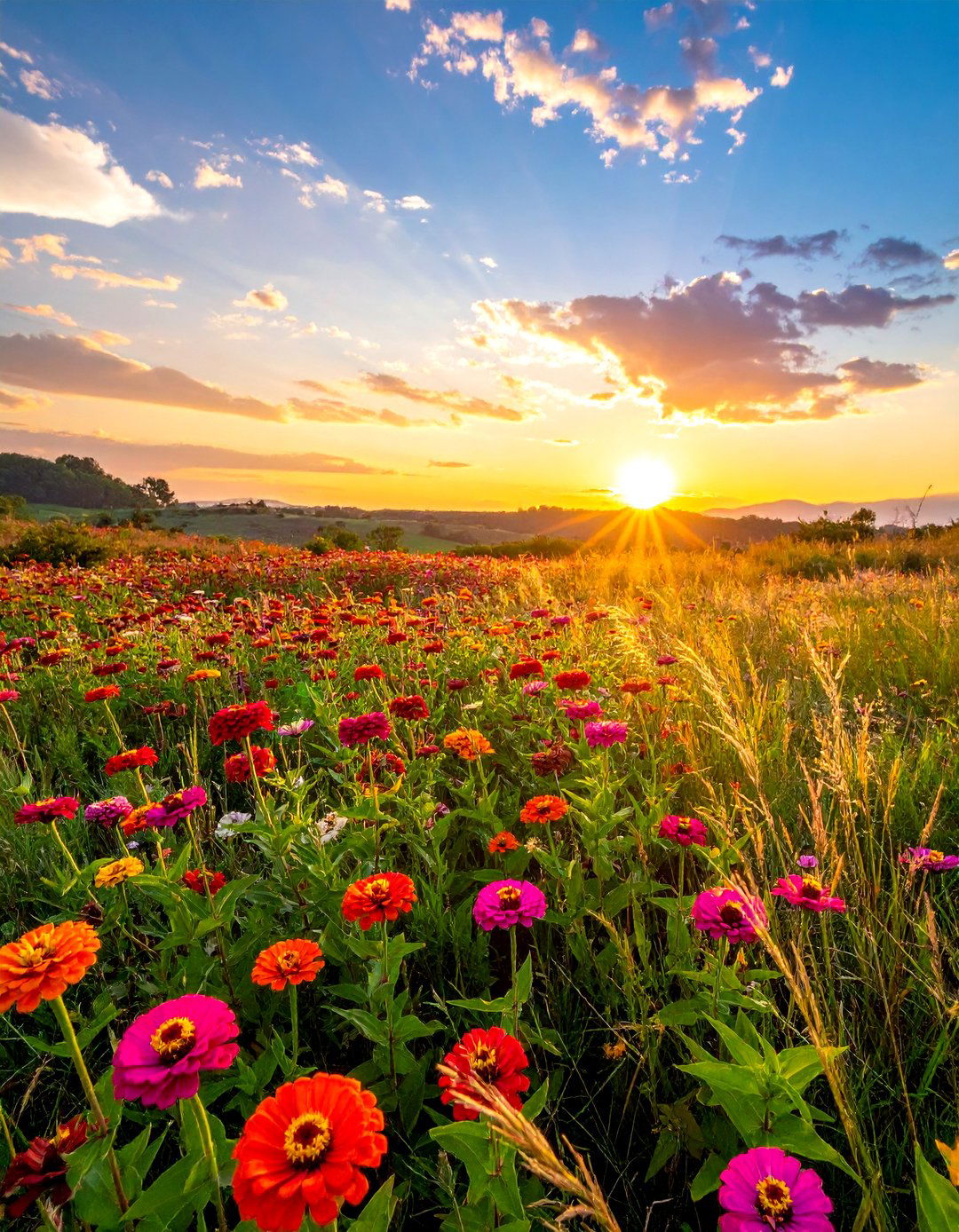
Cultivating a zinnia wildflower meadow offers a low-maintenance, naturalistic approach to gardening. Start by scattering seeds of hardy zinnia species, like *Zinnia angustifolia* or the classic *Zinnia elegans*, across a prepared, sunny patch of land. Mix them with other native wildflowers and grasses to create a diverse, meadow-like appearance. This style of garden requires minimal watering once established and provides a vital habitat for local wildlife. The result is a free-flowing, informal landscape that celebrates the untamed beauty of nature, with zinnias providing reliable pops of color that sway gracefully in the breeze throughout the summer and fall.
10. Tiered Zinnia Garden Bed
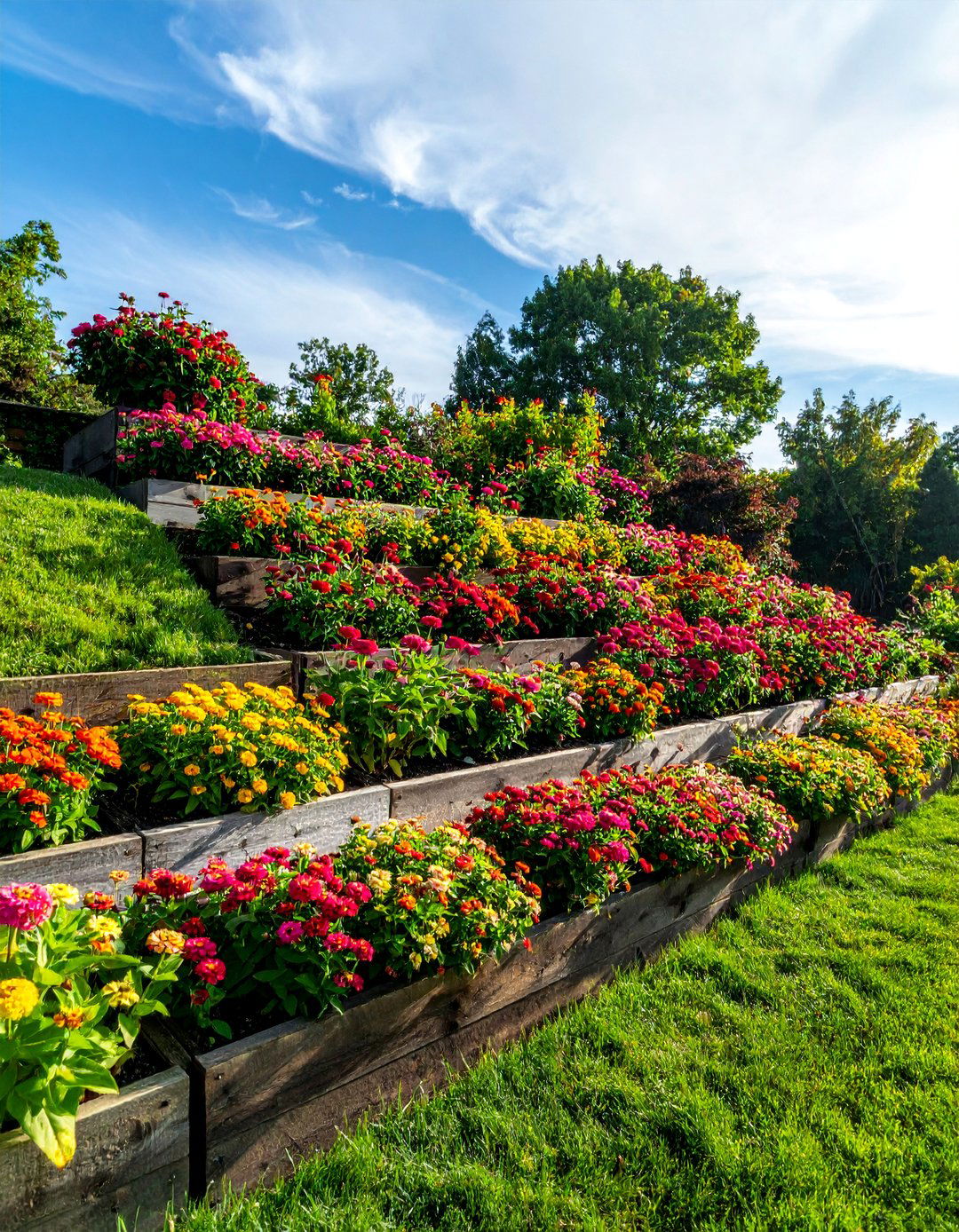
A tiered zinnia garden bed adds dimension and structure to your landscape, making it a visually interesting feature. This design works wonderfully on a slope or as a standalone raised bed with multiple levels. Plant the tallest zinnia varieties, such as 'State Fair Mix', on the highest tier to create a dramatic backdrop. Use mid-sized varieties on the middle level and fill the lowest, front-most tier with dwarf zinnias like the 'Profusion' series. This layered approach showcases the full range of zinnia sizes and forms while ensuring each plant receives adequate sunlight. The result is a lush, cascading wall of color.
11. Zinnia and Marigold Companion Planting
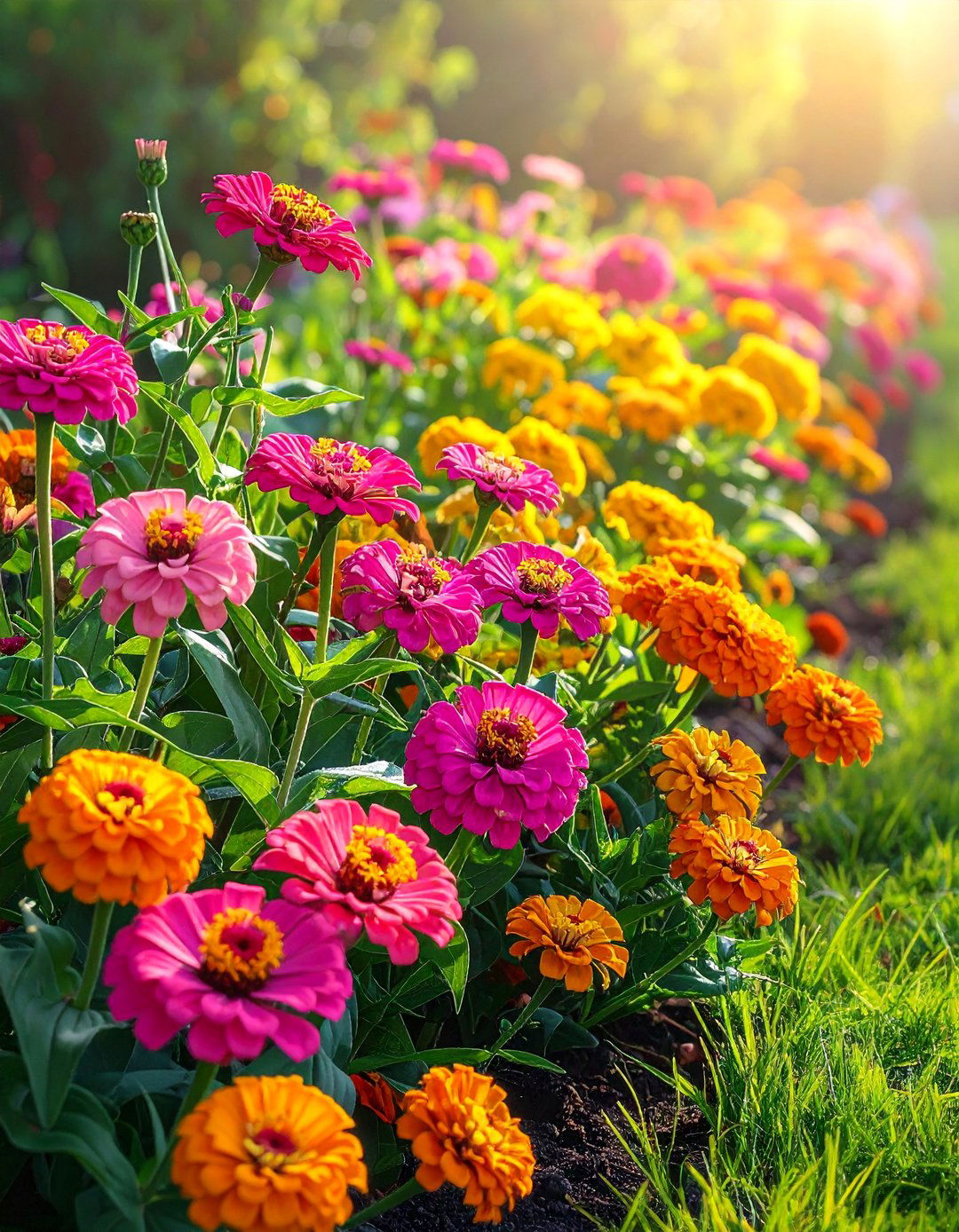
Combining zinnias with marigolds is a classic companion planting strategy that is both beautiful and beneficial. The vibrant blooms of both flowers create a cheerful, sun-drenched garden bed. Marigolds are known to deter common garden pests like nematodes and rabbits, offering a natural form of protection for your zinnias and other nearby plants. This pairing is incredibly low-maintenance, as both flowers thrive in similar sunny, well-drained conditions. The combination of zinnia's wide color palette with the bright yellows and oranges of marigolds results in a durable and dazzling display that keeps your garden healthy and colorful all season long.
12. Zinnia Garden with Ornamental Grasses
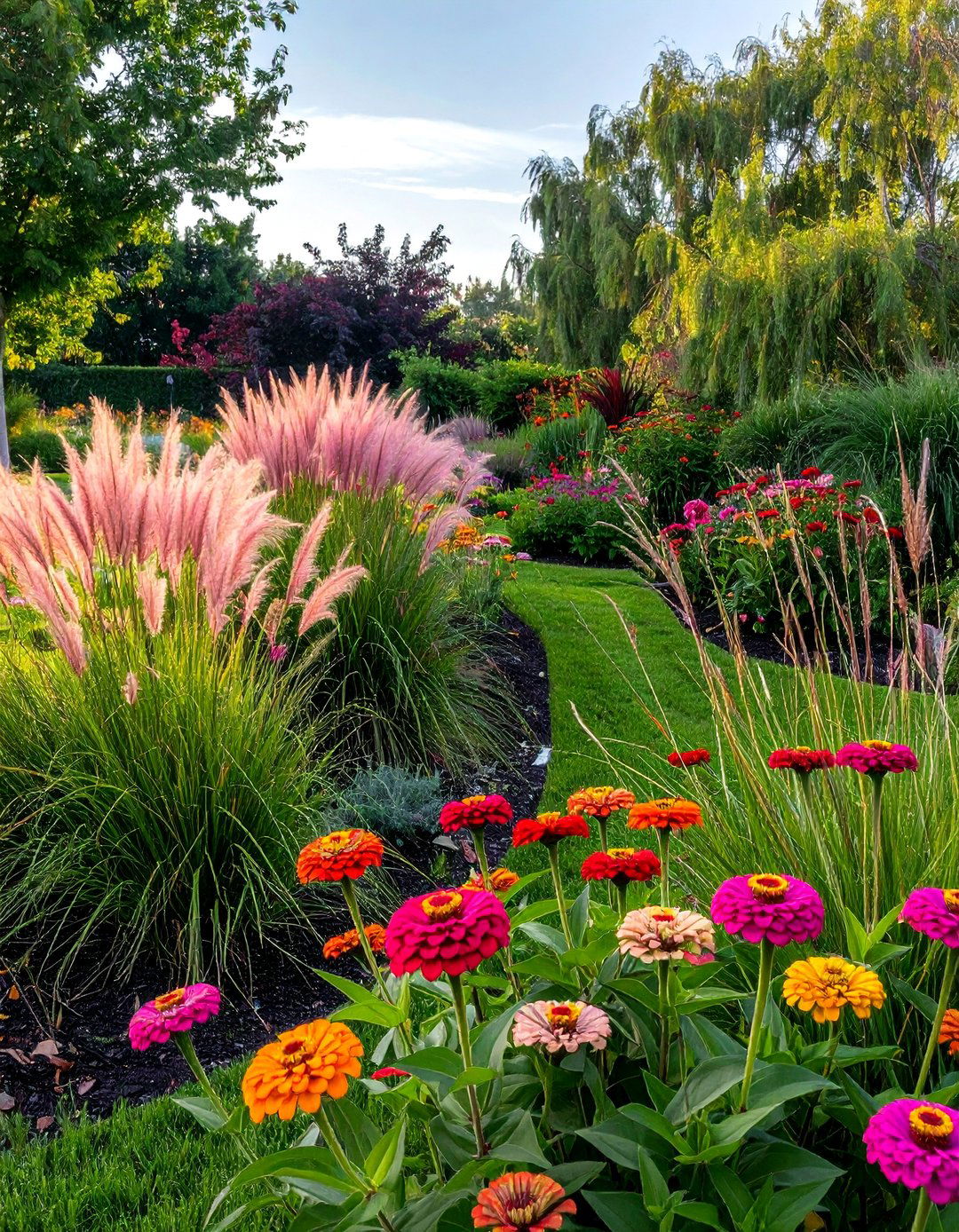
Integrating ornamental grasses into a zinnia garden adds texture, movement, and a modern feel to the landscape. The fine, airy foliage of grasses like fountain grass (*Pennisetum*) or blue fescue (*Festuca glauca*) provides a soft counterpoint to the bold, rounded blooms of zinnias. This combination creates a dynamic display as the grasses sway in the wind, adding a sense of life and motion to the garden bed. The contrasting forms—the upright, linear grasses against the mounded, colorful zinnias—produce a visually appealing and sophisticated design that looks stunning from summer through fall, even as the grasses develop their feathery seed heads.
13. Zinnia and Sunflower Garden
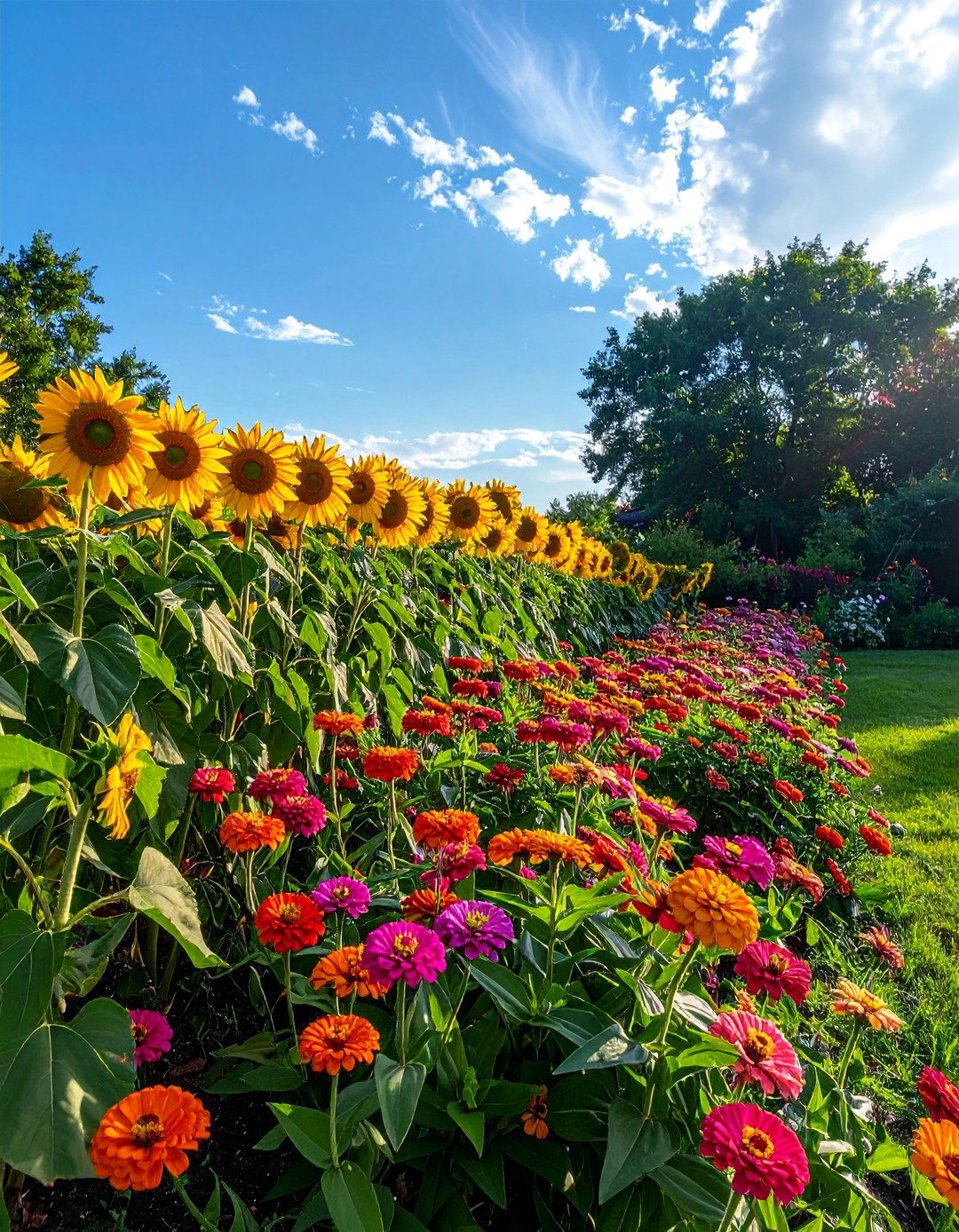
A zinnia and sunflower garden creates a quintessential summer scene, bursting with classic, cheerful blooms. The towering height of sunflowers provides a dramatic vertical element and a sunny backdrop for the shorter, bushier zinnias planted at their base. This pairing is not only visually striking but also highly attractive to pollinators, creating a bustling hub of activity. Choose sunflower varieties of different heights and colors to add further interest. The combination of tall, stately sunflowers and a dense carpet of multi-colored zinnias results in a joyful, low-maintenance garden that embodies the spirit of summer and provides plenty of flowers for cutting.
14. All-White Zinnia Garden
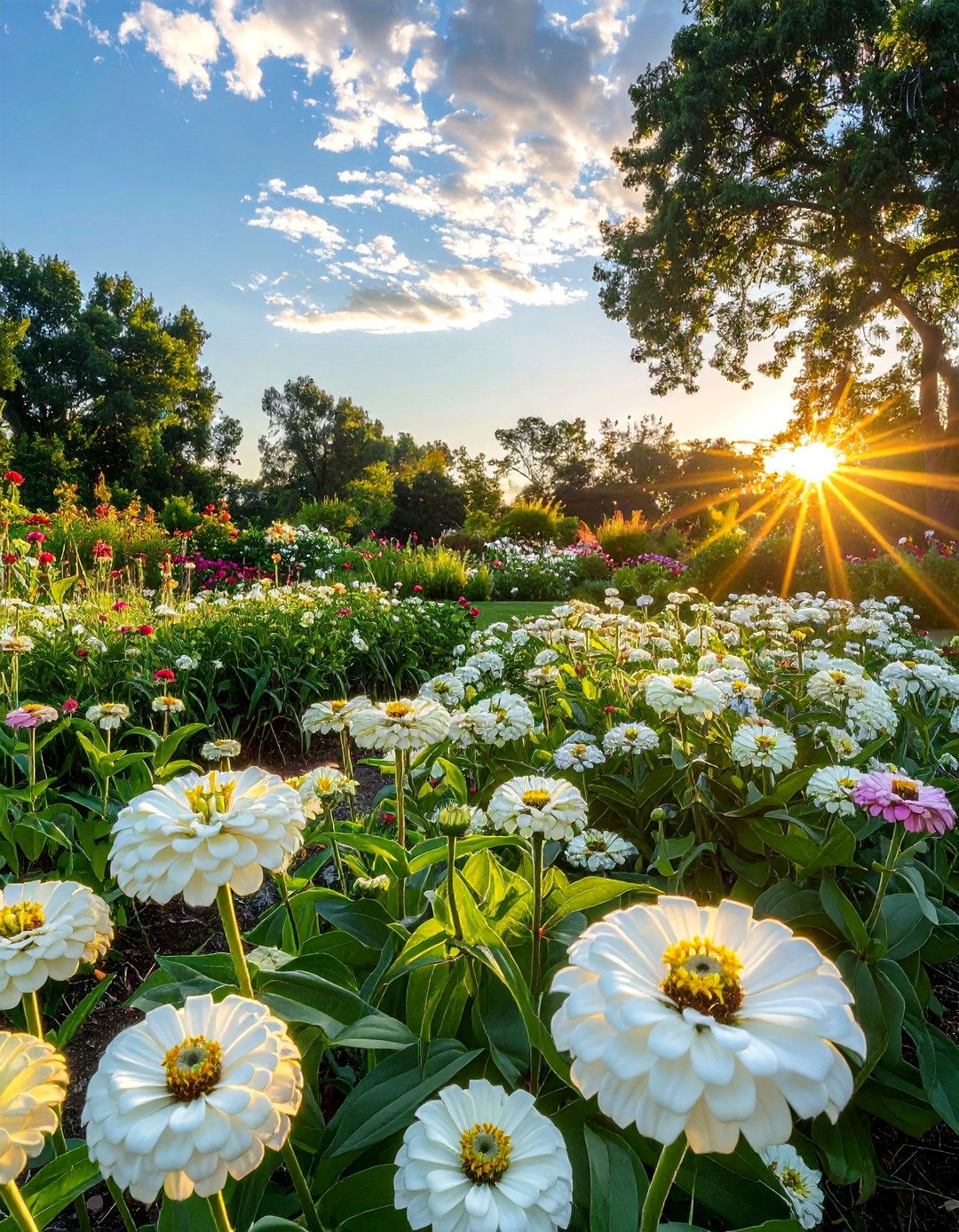
An all-white zinnia garden offers a timeless and elegant look that brings a sense of tranquility and brightness to any space. Planting varieties like 'Polar Bear' or 'White Wedding' in mass creates a serene and sophisticated display. White flowers are particularly striking at dusk, as they seem to glow in the fading light, extending the garden's beauty into the evening hours. This monochromatic scheme highlights the different textures and shapes of the zinnia blooms, from simple single petals to complex pom-pom forms. An all-white zinnia garden feels cool and refreshing on hot summer days and pairs beautifully with green foliage.
15. Zinnia Mandala Garden
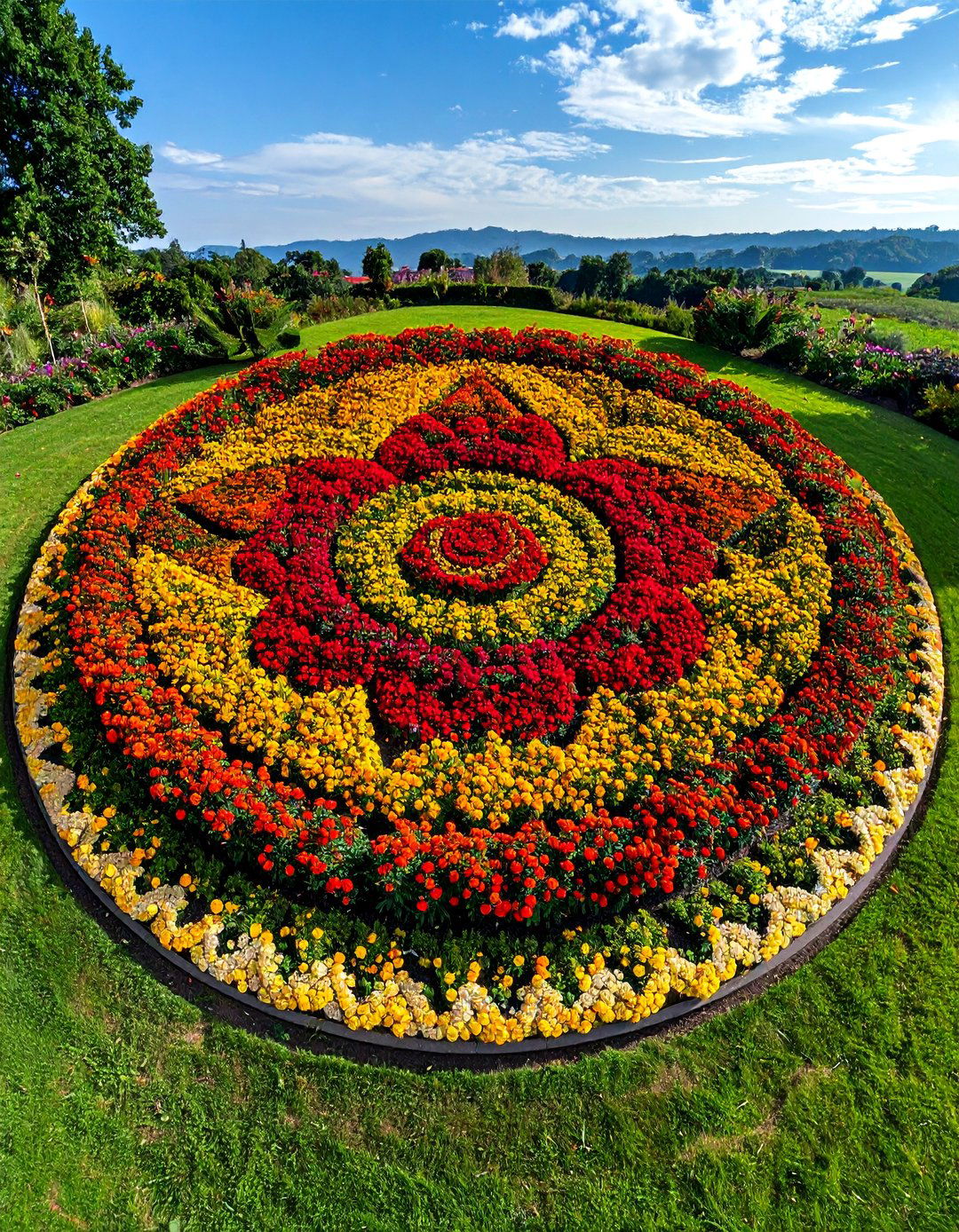
For a unique and spiritual garden design, consider creating a zinnia mandala garden. This involves planting zinnias in a circular, geometric pattern that radiates from a central point. Use different colors of zinnias to create intricate rings and shapes within the circle, resulting in a living piece of art. Dwarf and uniform varieties, such as the 'Profusion' or 'Zahara' series, are ideal for this purpose as they maintain a neat shape, which is crucial for the pattern's clarity. A zinnia mandala is not only a stunning visual feature but can also serve as a meditative space, offering a sense of order and harmony.
16. Zinnia Border for a Vegetable Garden
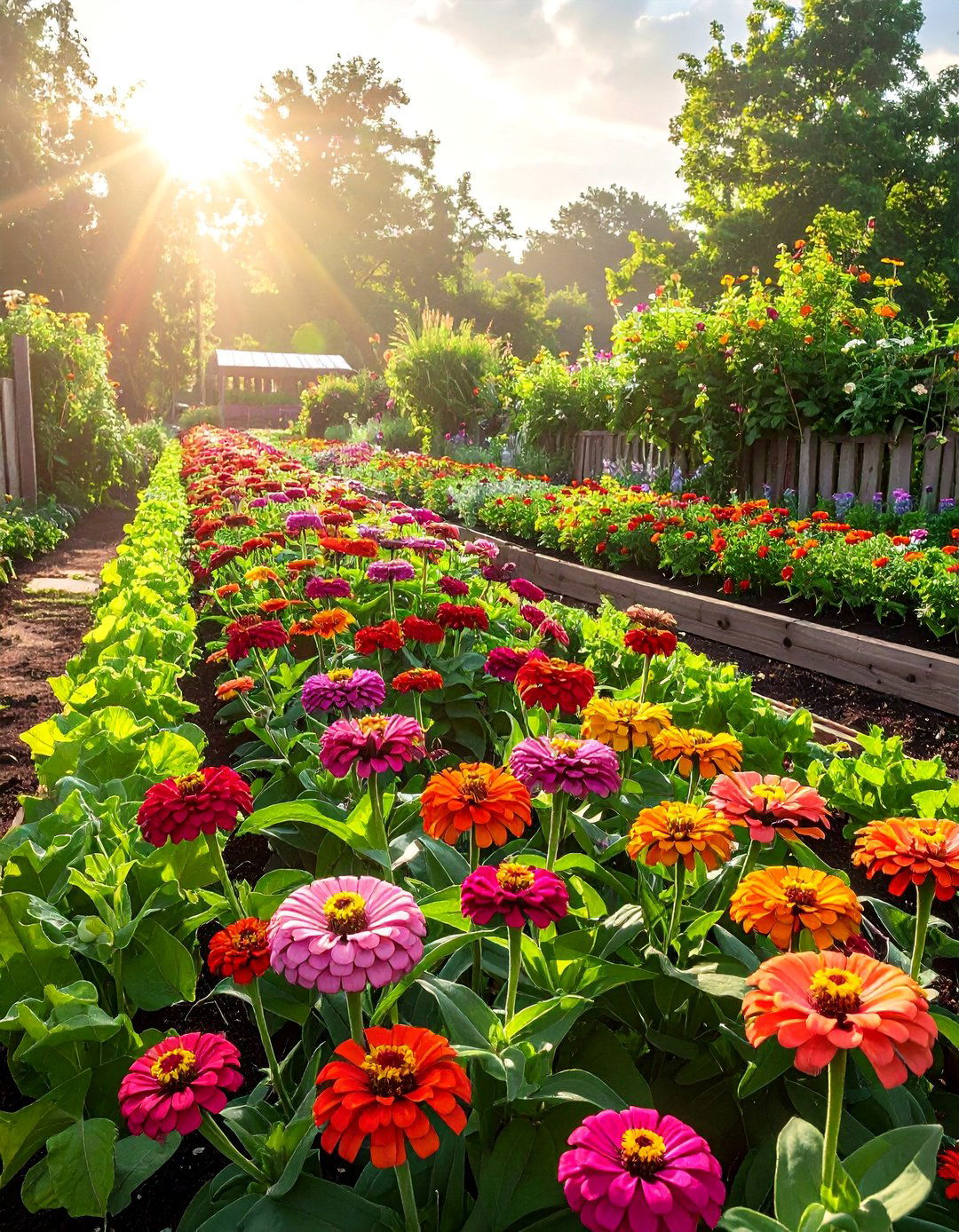
Incorporating a zinnia border around your vegetable garden is a smart and beautiful strategy. These vibrant flowers act as a "trap crop," luring pests like Japanese beetles away from your precious vegetables. Furthermore, zinnias attract a host of beneficial insects and pollinators, such as bees, hoverflies, and parasitic wasps, which can help improve pollination and control pest populations naturally. This practice, known as companion planting, enhances the overall health and productivity of your vegetable patch. The cheerful and colorful zinnia border adds aesthetic appeal, transforming a purely functional space into a delightful and productive potager garden.
17. Zinnia and Cosmos Cottage Garden
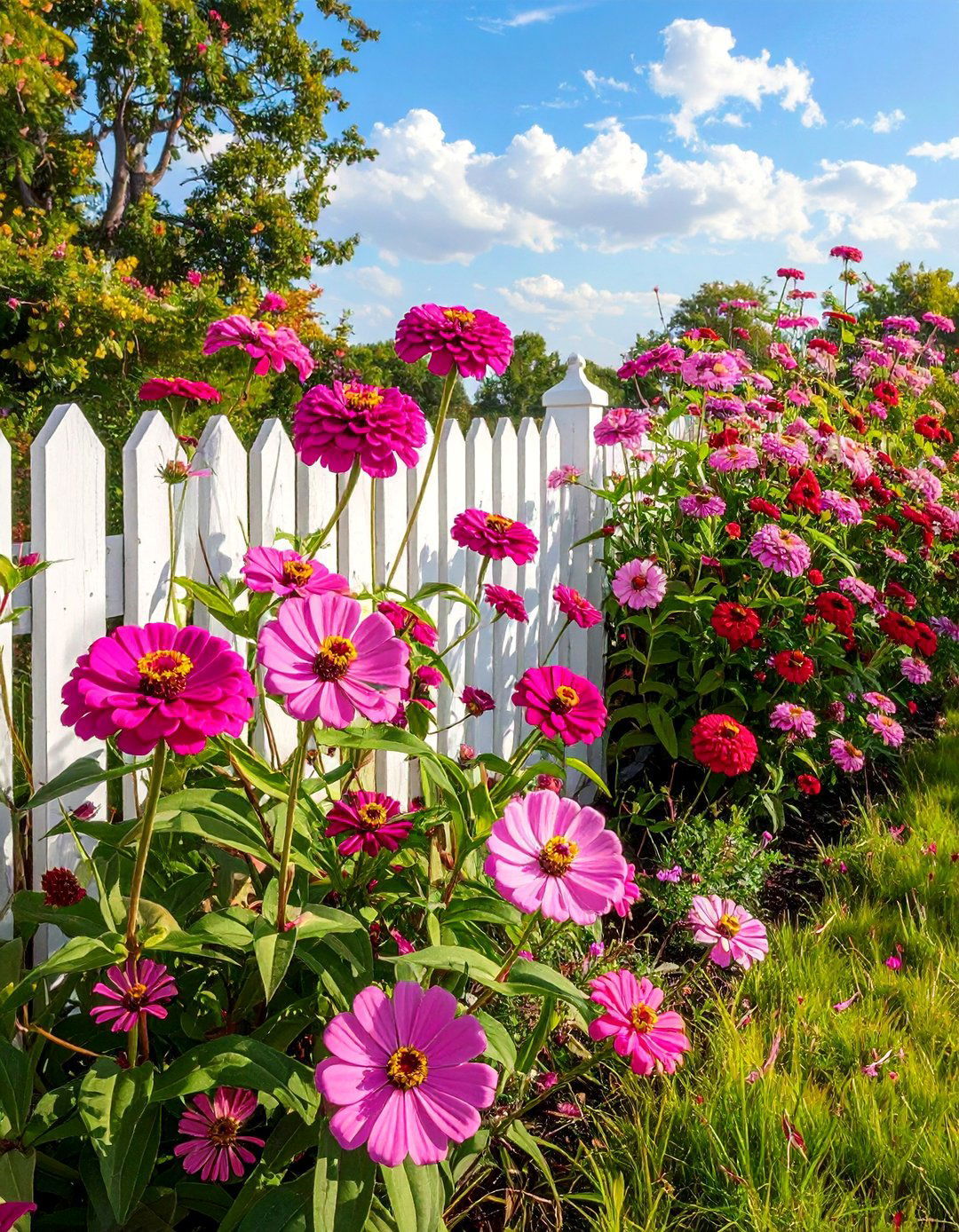
A zinnia and cosmos cottage garden evokes a charming, romantic, and informal feel. Both of these easy-to-grow annuals produce an abundance of blooms on airy stems, creating a soft, billowy effect. The delicate, feathery foliage of cosmos provides a beautiful textural contrast to the sturdier leaves and stems of zinnias. Plant a mix of pastel and brightly colored varieties of both flowers and allow them to self-sow for a natural, relaxed look that evolves year after year. This delightful combination fills garden beds with a profusion of color and movement, perfectly capturing the carefree essence of a traditional cottage garden.
18. Zinnia Window Box Display
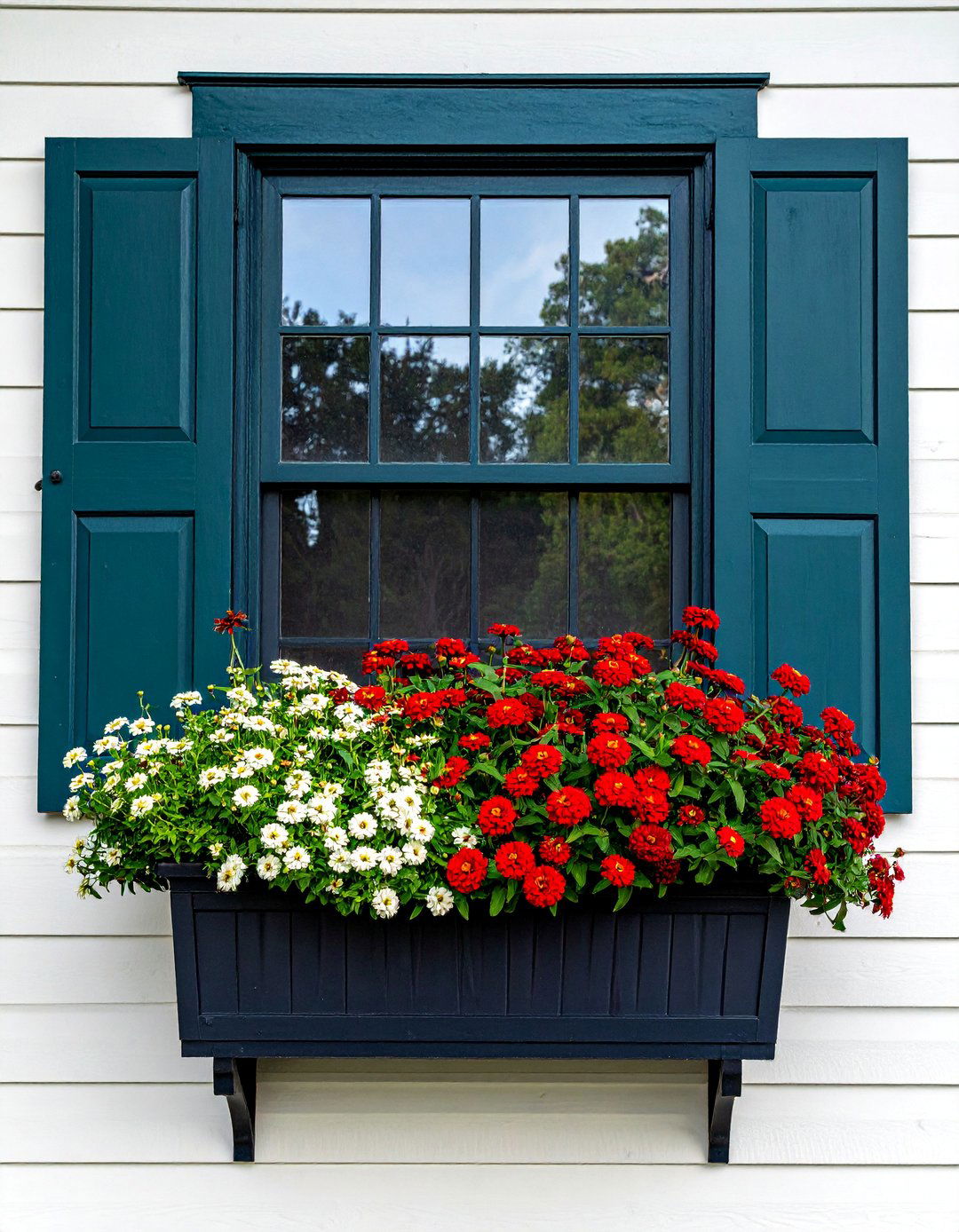
Brighten your home's exterior with a vibrant zinnia window box display. Compact and dwarf zinnia varieties like 'Thumbelina' or the 'Profusion' series are perfectly suited for the limited space of a window box. Their continuous blooming ensures a splash of cheerful color right outside your window all summer long. You can create a simple yet impactful display with a single zinnia color, or mix multiple hues for a more eclectic look. Combine them with trailing plants like sweet potato vine or calibrachoa to add a cascading element. A well-planted zinnia window box adds instant curb appeal and brings the garden's beauty up close.
19. Zinnia Garden Along a Fence Line
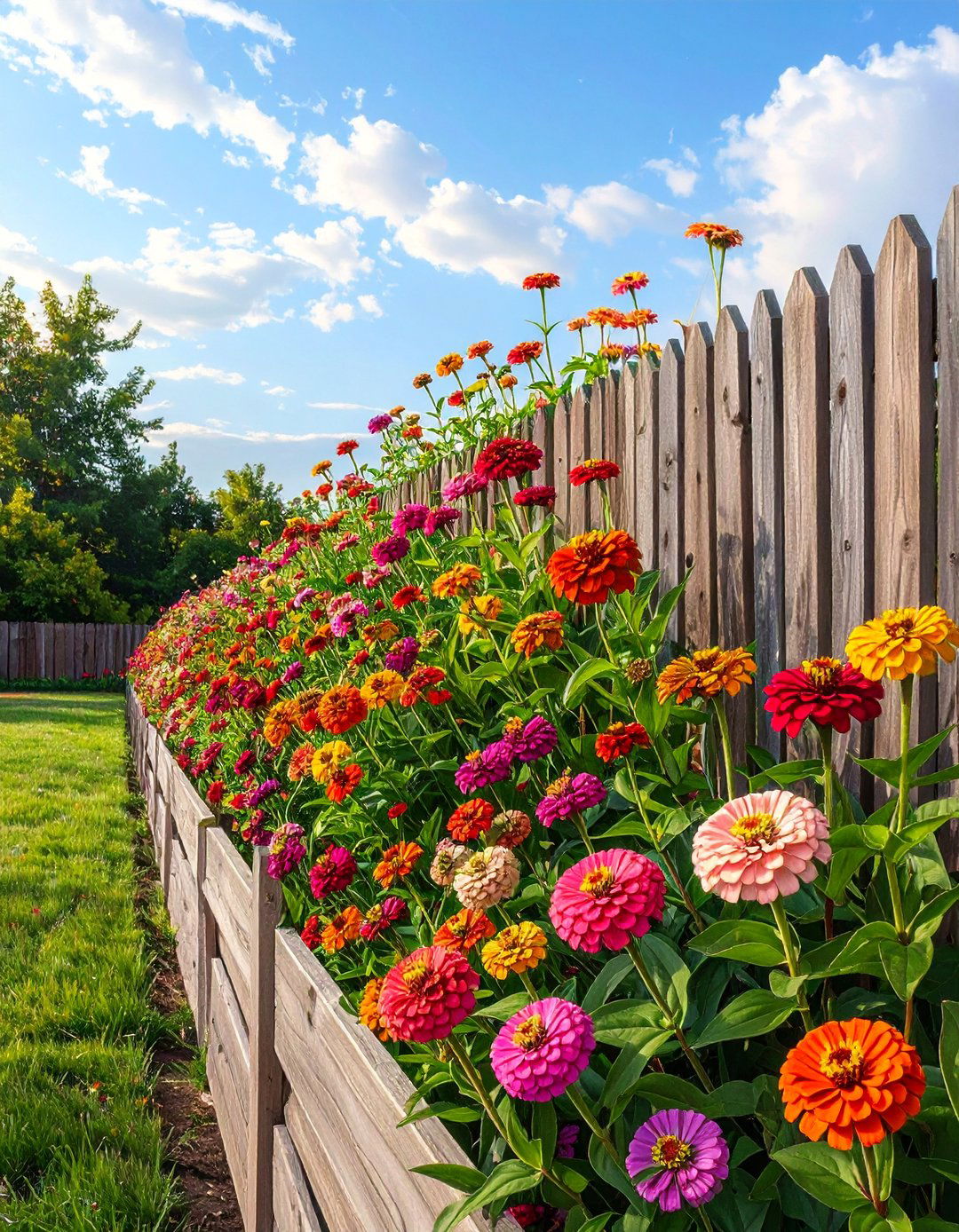
Transform a plain fence line into a stunning garden feature with a continuous planting of zinnias. Planting a mix of tall and medium-height zinnia varieties along a fence can create a living wall of color that hides imperfections and adds privacy. The fence provides support for taller types like 'Benary's Giant', preventing them from flopping over in wind or rain. This linear planting creates a bold, horizontal swath of color that draws the eye through the landscape. It is an easy and effective way to define property lines or screen unsightly views while filling your yard with vibrant, long-lasting blooms.
20. Zinnia Garden with Stepping Stones
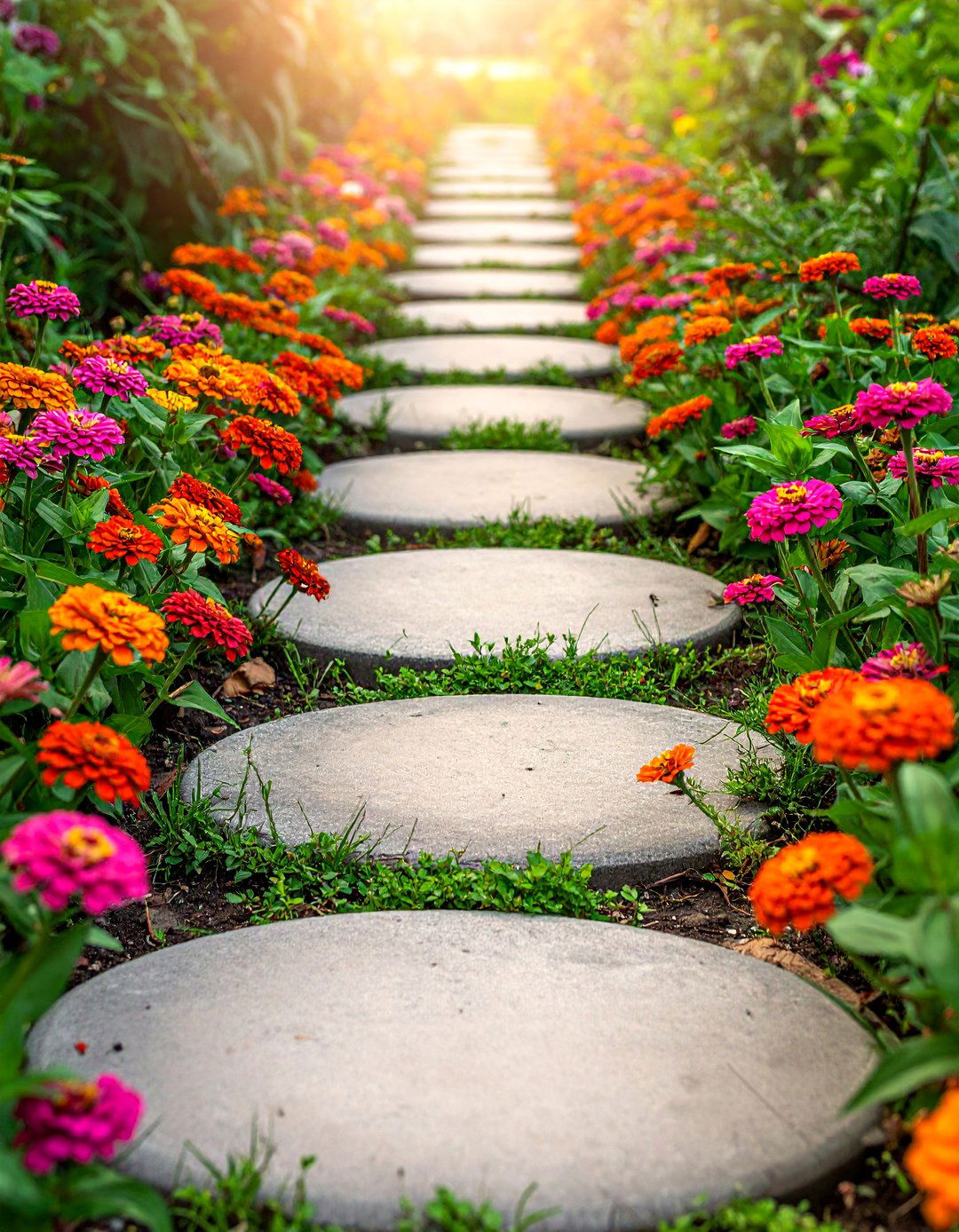
Integrating stepping stones into a zinnia garden creates a charming and practical pathway through the blooms. This allows you to walk amongst the flowers for maintenance or cutting without compacting the soil. Plant low-growing, mounding zinnia varieties like the 'Zahara' or 'Profusion' series along the edges of the stones. Their dense growth habit will soften the hard edges of the pavers and create a lush, colorful carpet that you can meander through. This design invites you to immerse yourself in the garden, getting up close to appreciate the details of the flowers and the pollinators they attract.
21. Zig-Zag Zinnia Planting Pattern
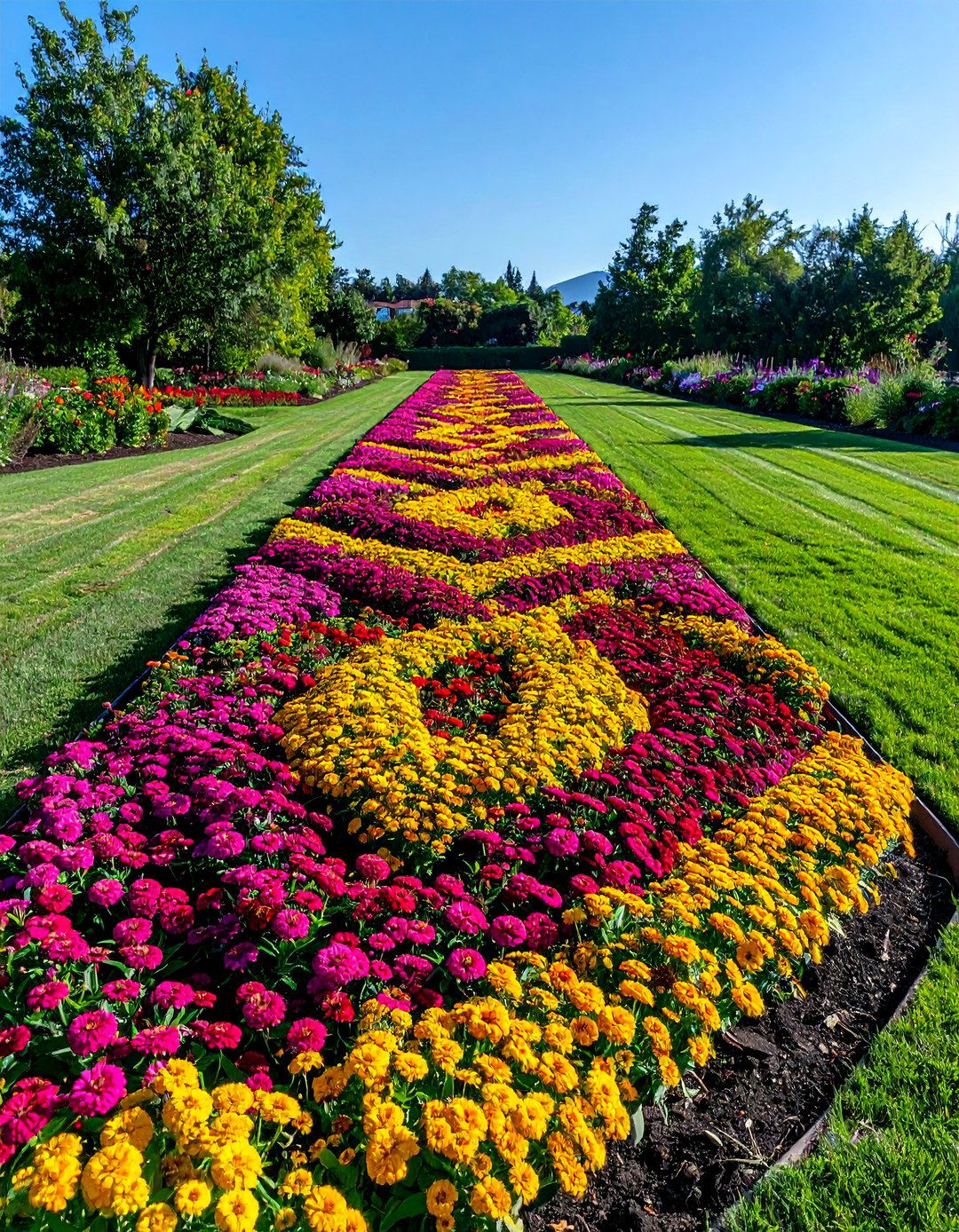
For a playful and dynamic garden bed, try a zig-zag zinnia planting pattern. This design moves away from traditional straight rows and creates a sense of movement and energy. Alternate two or three different colors of zinnias in a repeating zig-zag or chevron pattern down the length of the bed. This technique works particularly well in long, narrow spaces, as it adds visual interest and makes the area appear wider. The geometric pattern is eye-catching and modern, offering a fun twist on a classic flower bed while showcasing the brilliant colors of the zinnias in an organized yet lively fashion.
22. Zinnia and Salvia Garden Bed
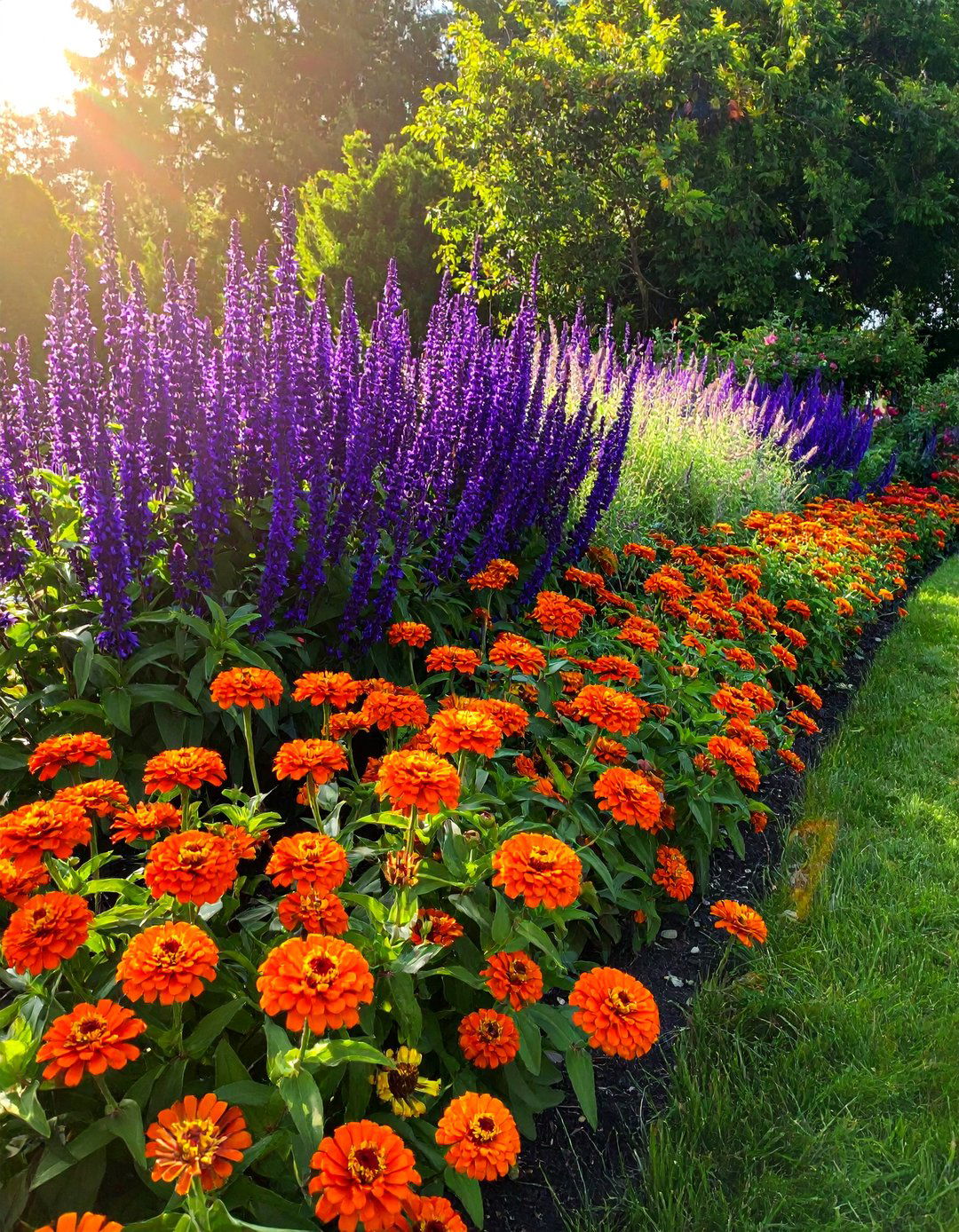
A garden bed combining zinnias and salvia offers a beautiful contrast in both color and form. The spiky, vertical flower stalks of salvia, particularly in shades of blue and purple, provide a striking counterpoint to the rounded, daisy-like blooms of zinnias. This pairing creates a rich texture and a vibrant color palette, as the cool tones of the salvia complement the warm and varied hues of the zinnias. Both plants are sun-lovers and are relatively drought-tolerant once established, making them a low-maintenance and water-wise choice. This combination is also a magnet for pollinators, ensuring your garden is buzzing with activity.
23. Zinnia Groundcover Planting
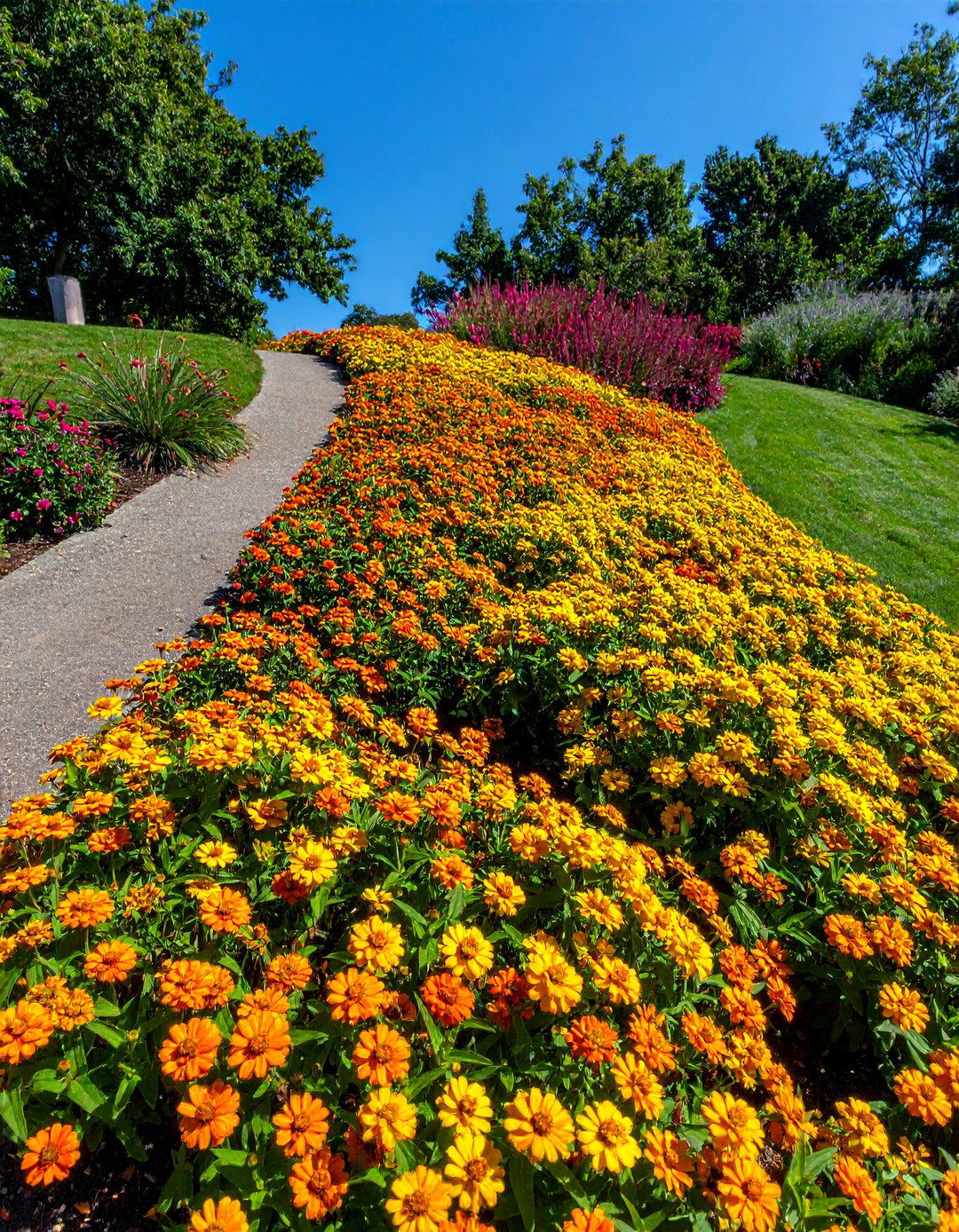
While not a traditional groundcover, certain low-growing, spreading zinnia varieties can be used to create a flowering carpet of color. The creeping zinnia (*Zinnia angustifolia*) or the 'Profusion' series are excellent choices for this purpose. Planted en masse, they form a dense, low mat of foliage and blooms that can effectively cover bare ground in a sunny spot. This approach is perfect for covering gentle slopes, filling in areas between larger shrubs, or creating a vibrant, weed-suppressing layer at the front of a border. It’s an unconventional yet highly effective way to use zinnias for maximum color impact.
24. Ombré Zinnia Garden
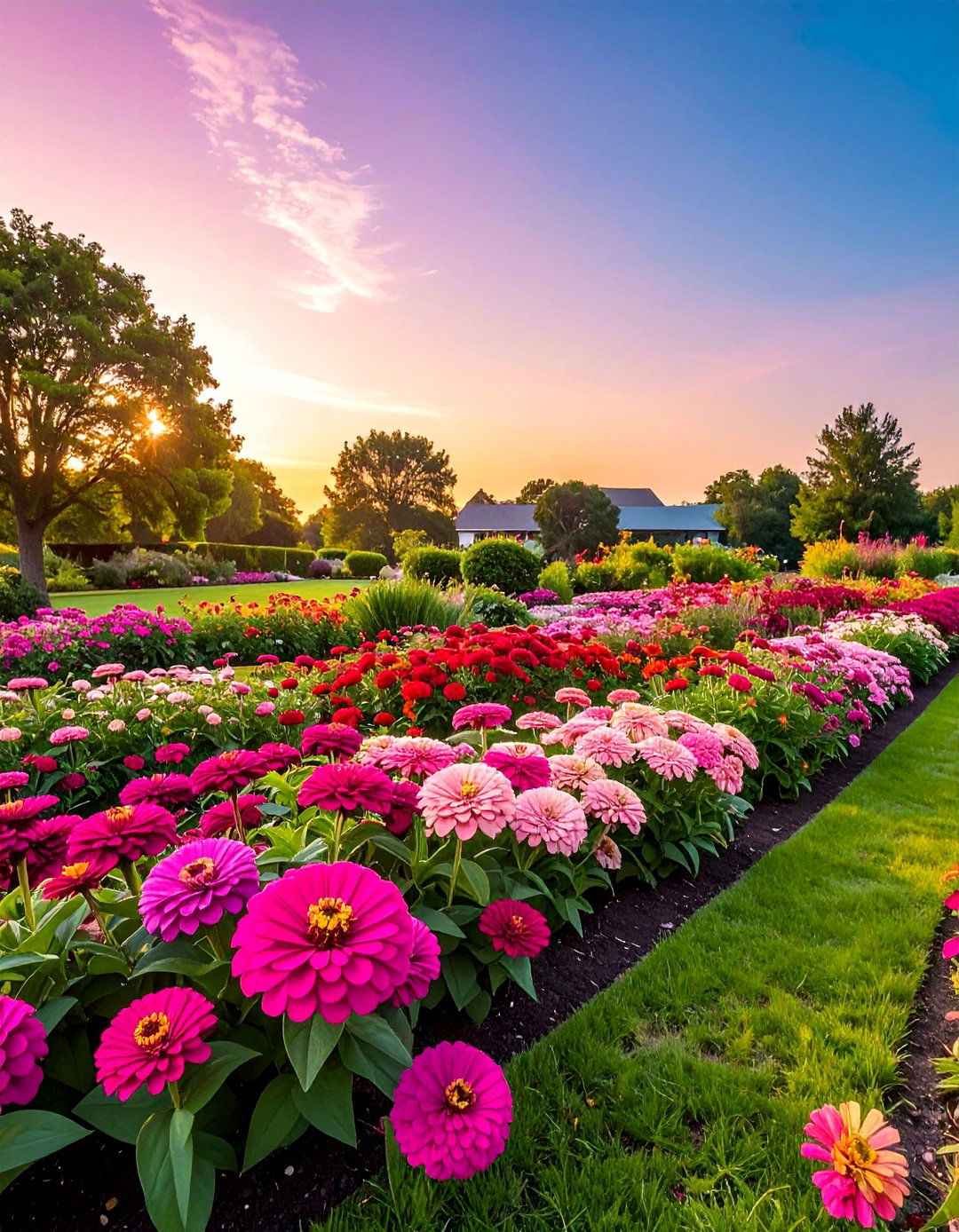
An ombré zinnia garden creates a sophisticated and visually stunning gradient of color. This design involves carefully arranging different zinnia varieties to transition smoothly from one color to another. For example, you could plant a bed that flows from deep red to bright orange, then to golden yellow, and finally to creamy white. To achieve a seamless effect, choose varieties with similar heights and growth habits. This thoughtful arrangement transforms a simple flower bed into a deliberate piece of living art, showcasing a beautiful, flowing spectrum of color that is both unique and mesmerizing, capturing attention with its subtle yet powerful design.
25. Zinnia and Coleus Shade-to-Sun Transition Garden
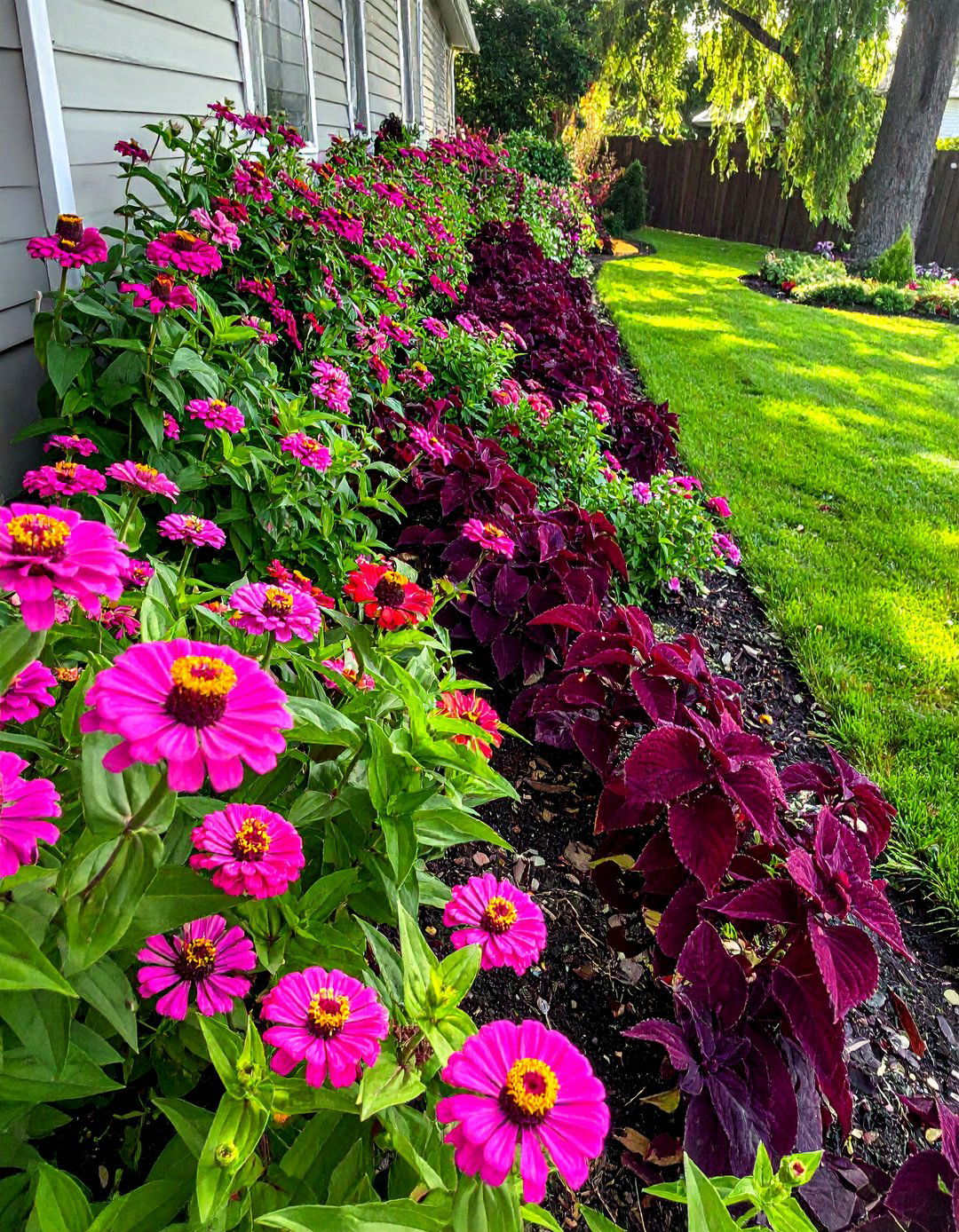
Create a seamless transition from a shady area to a sunny spot using coleus and zinnias. Coleus, with its brilliantly colored foliage, thrives in partial shade, while sun-loving zinnias flourish in bright light. Plant the coleus in the shadier part of the bed, allowing its vibrant leaves to provide color where flowers might struggle. As the garden bed moves into the sunnier section, begin interplanting and then fully transition to mass plantings of zinnias. This creates a continuous flow of color and texture across different light conditions, ensuring the entire garden bed is visually interesting and thriving from end to end.
Conclusion:
Zinnias offer an incredible range of possibilities for gardeners seeking vibrant, long-lasting color. From structured monochromatic beds and artistic ombré patterns to whimsical wildflower meadows and practical pollinator habitats, their versatility is unmatched. These easy-to-grow annuals can be adapted to fit any style, space, or function, whether in containers, borders, or cutting gardens. By exploring these diverse ideas, you can easily transform your outdoor space into a breathtaking showcase of color and life, enjoying a profusion of cheerful blooms from the height of summer until the very first frost.

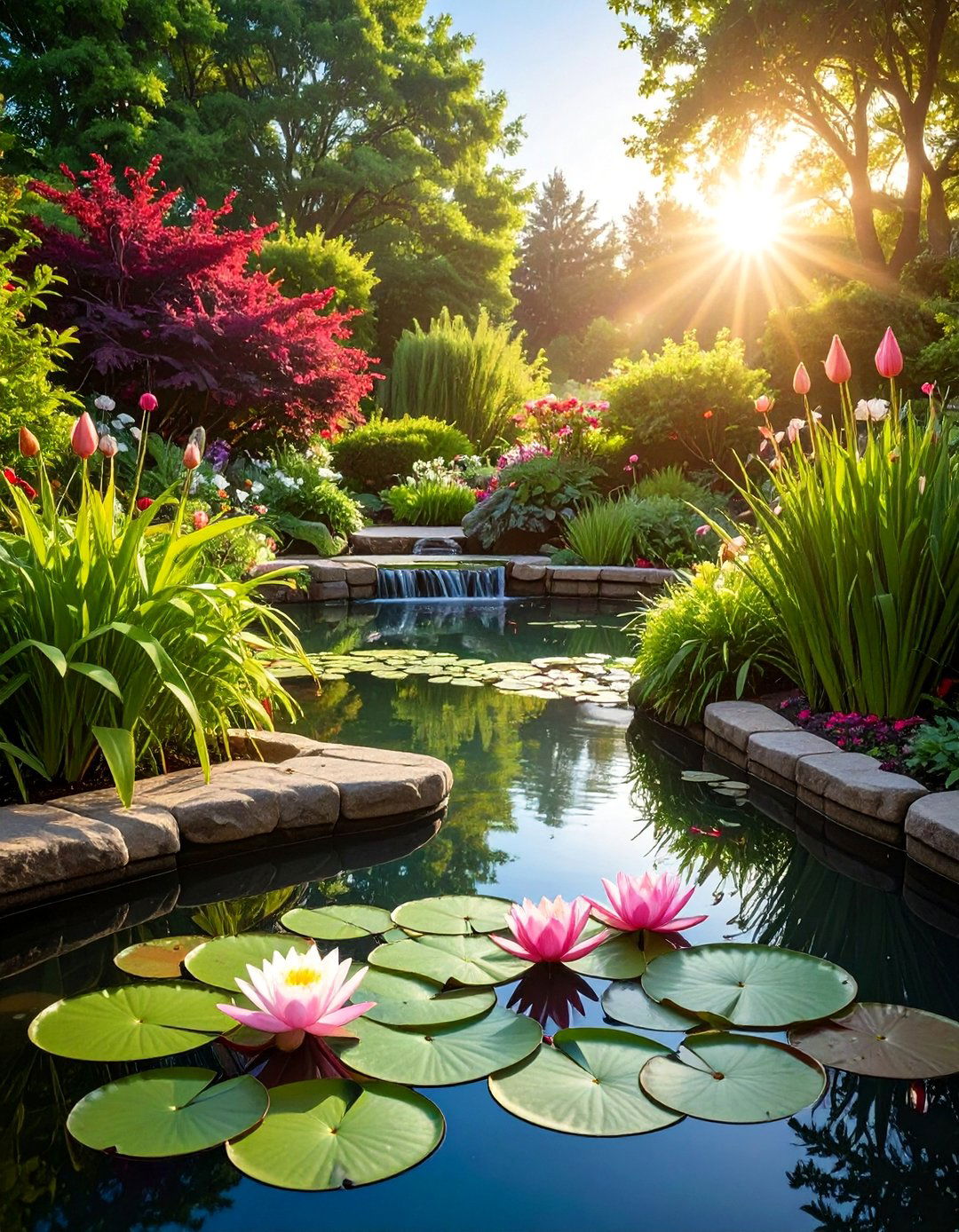
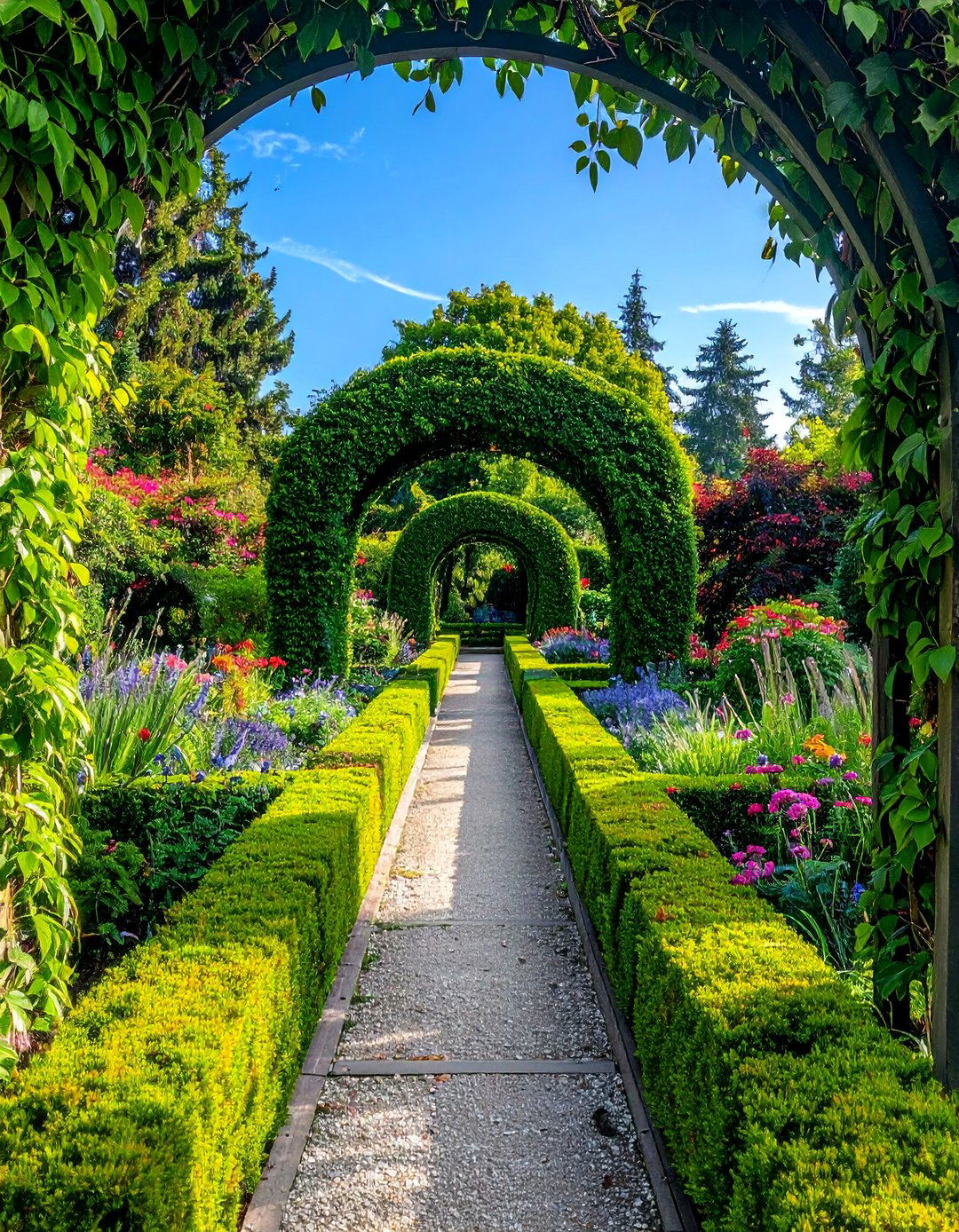
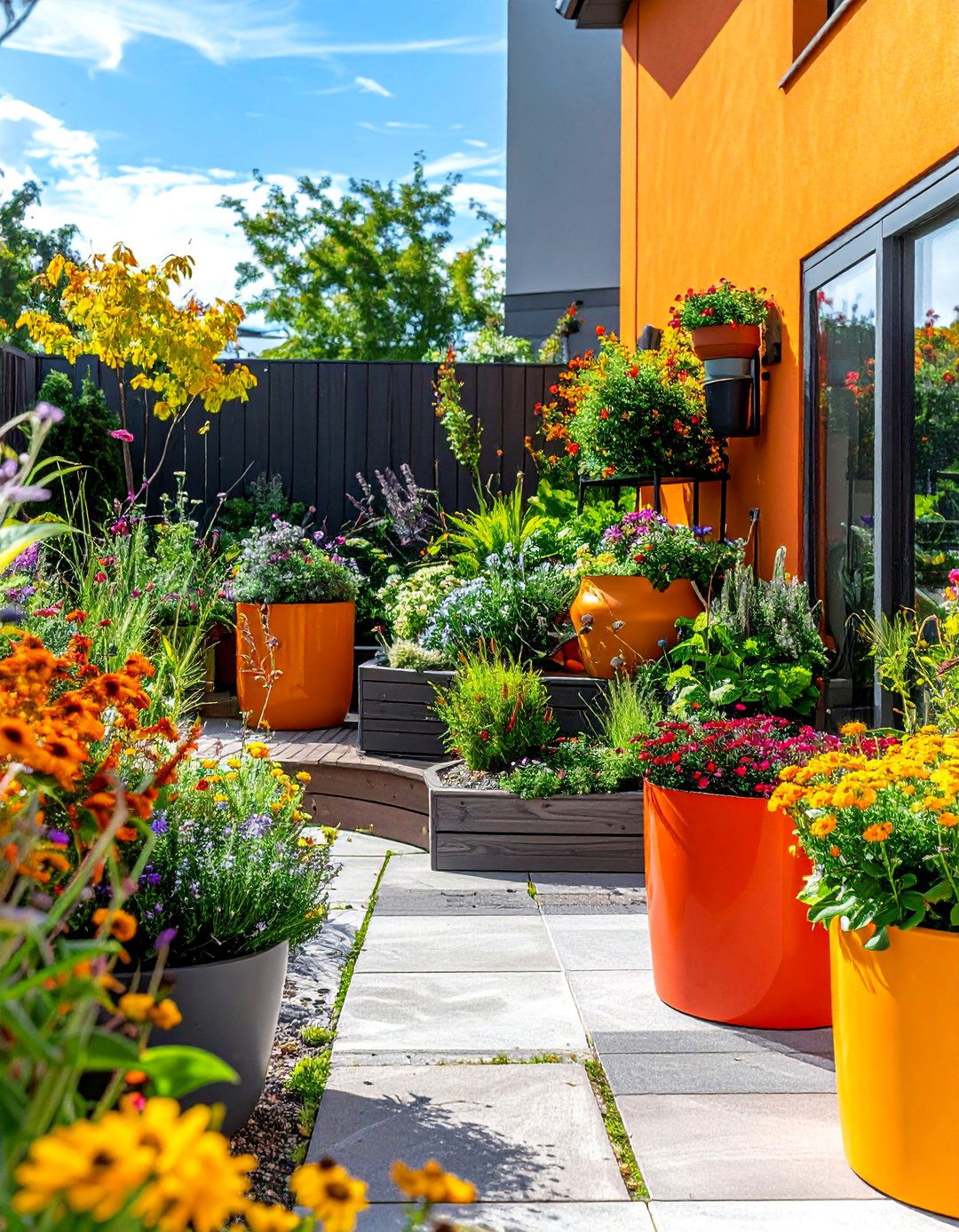
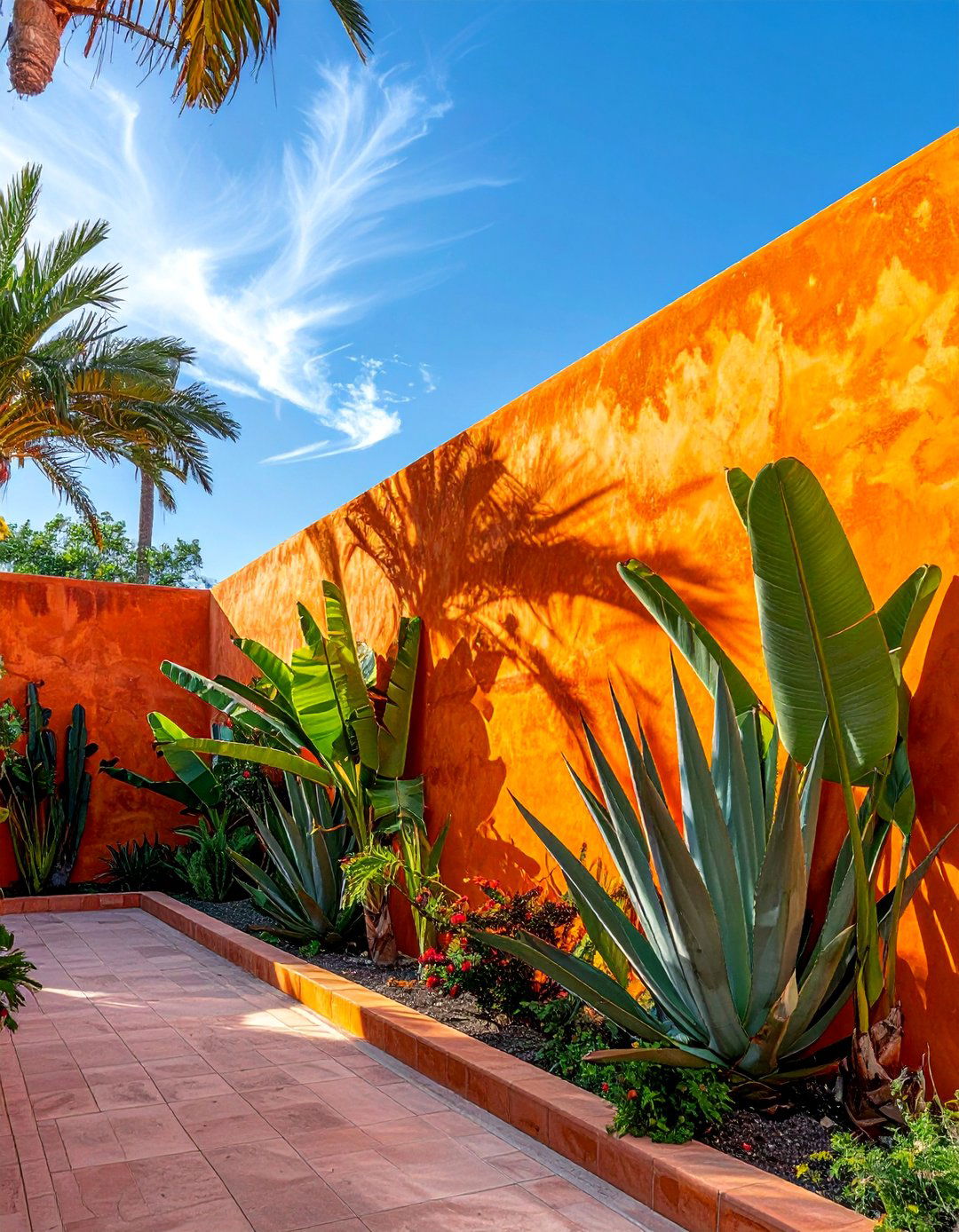
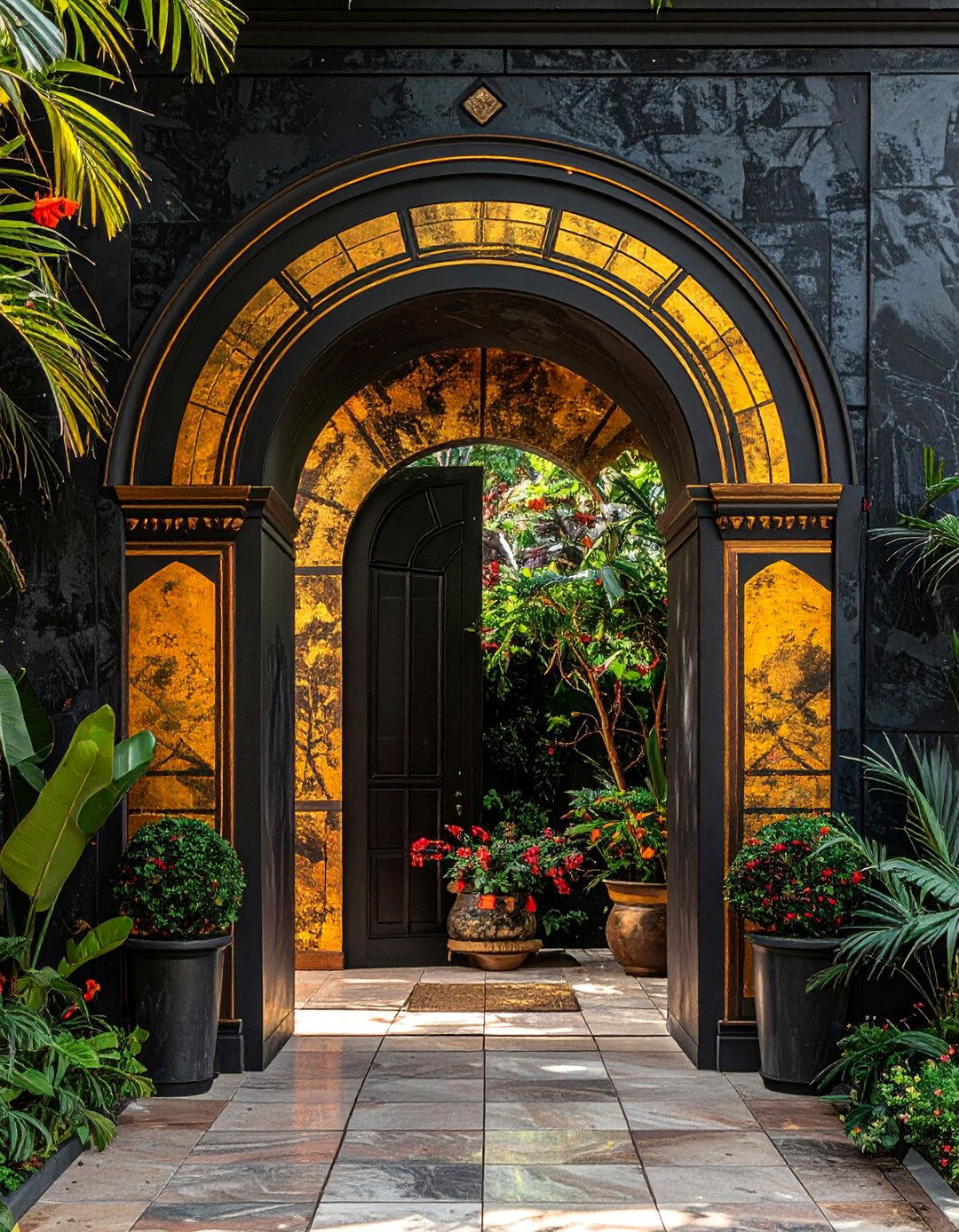
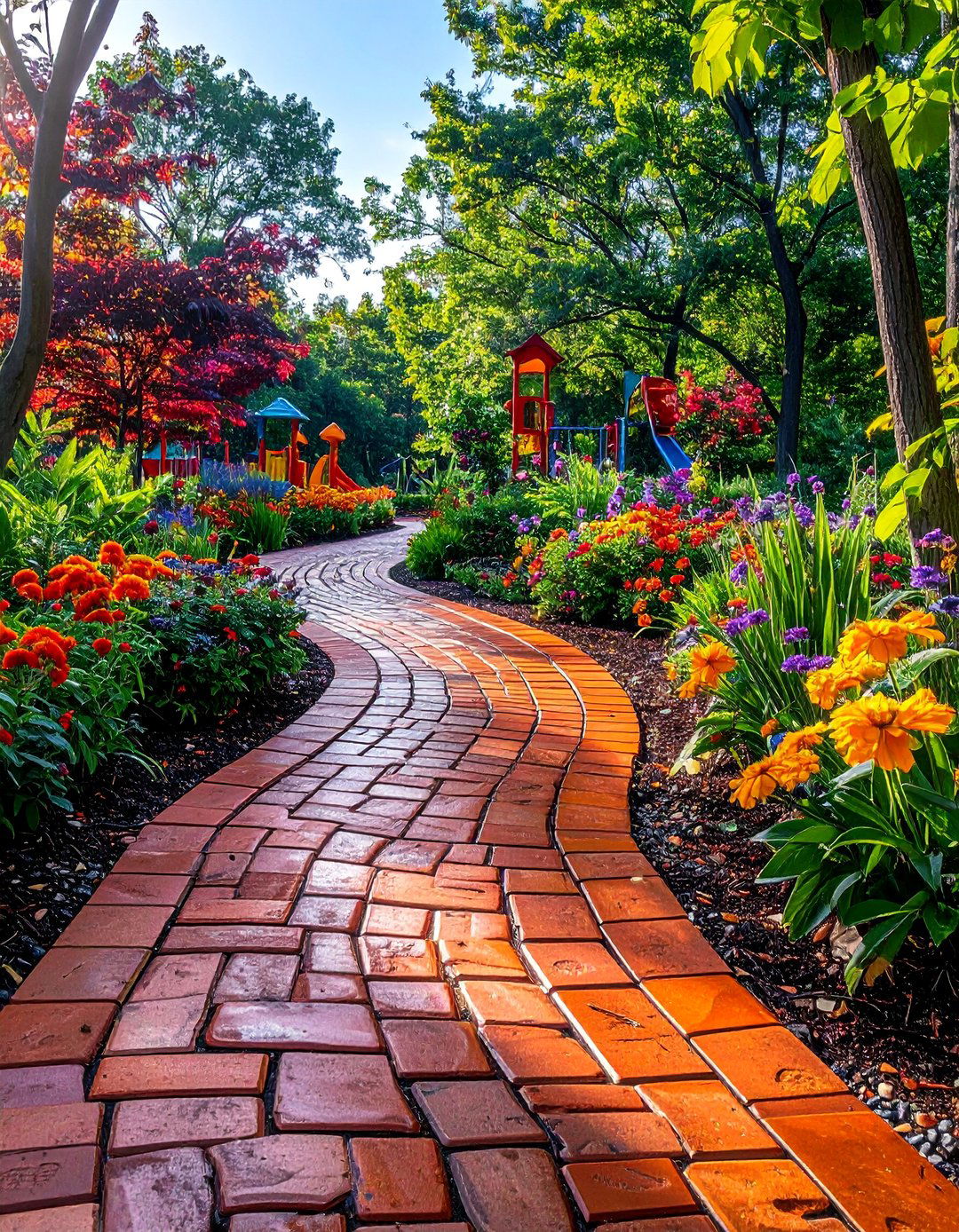
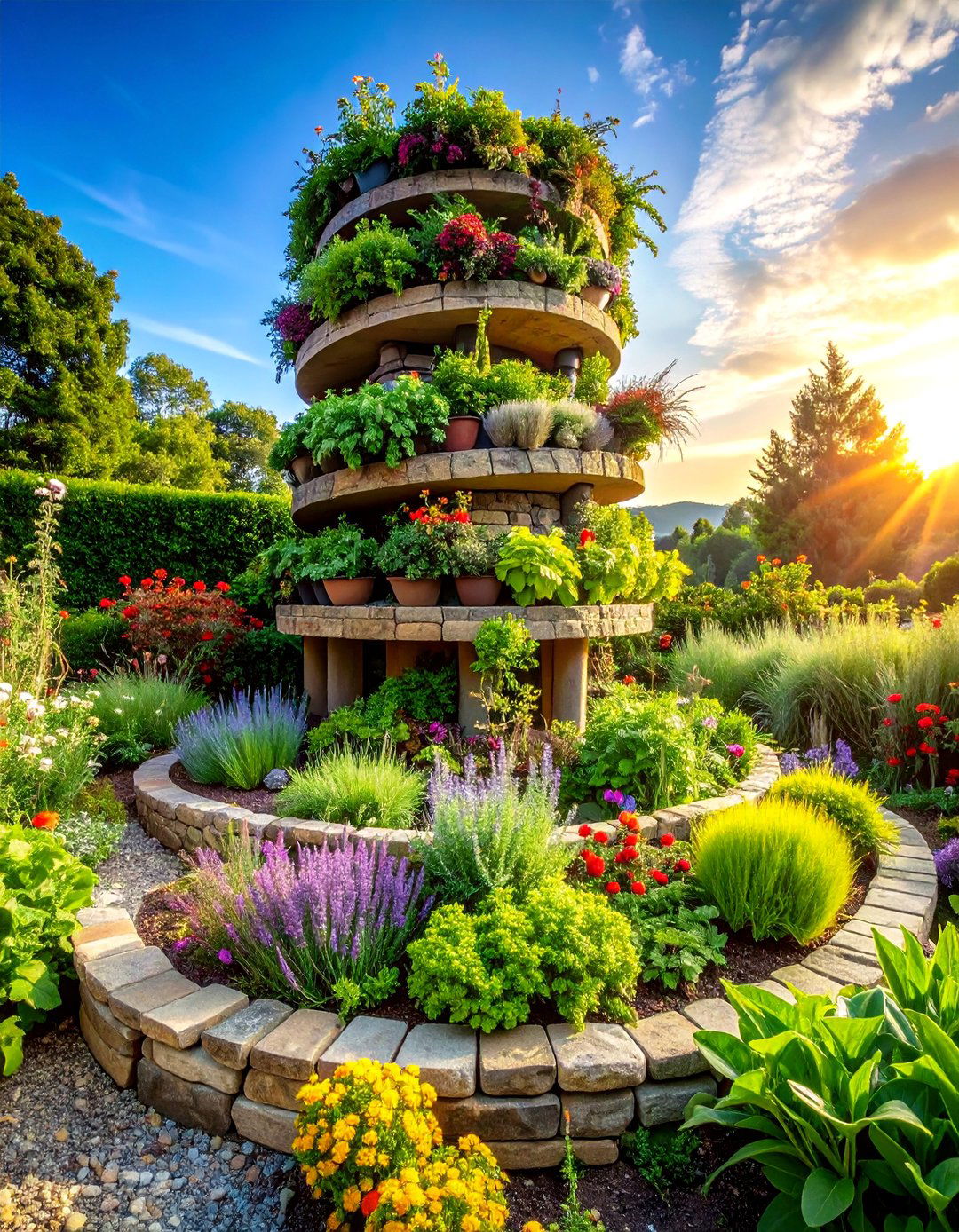
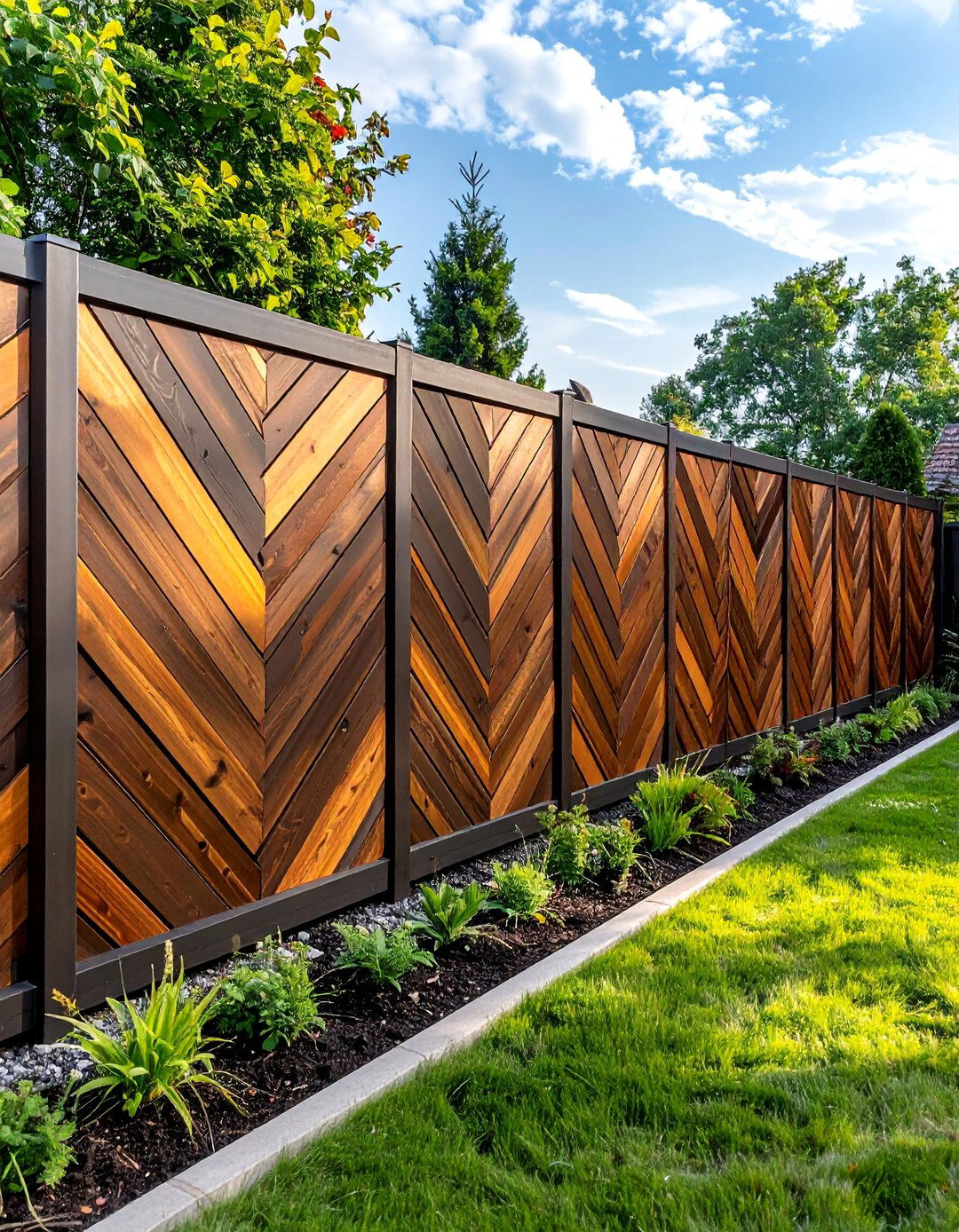
Leave a Reply